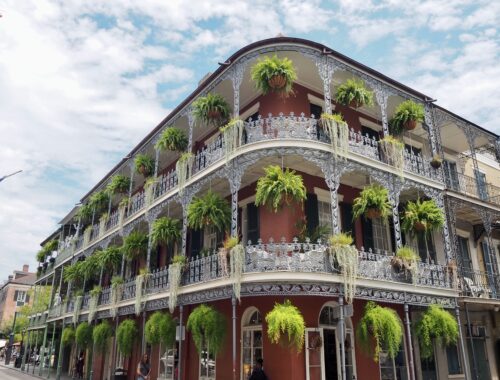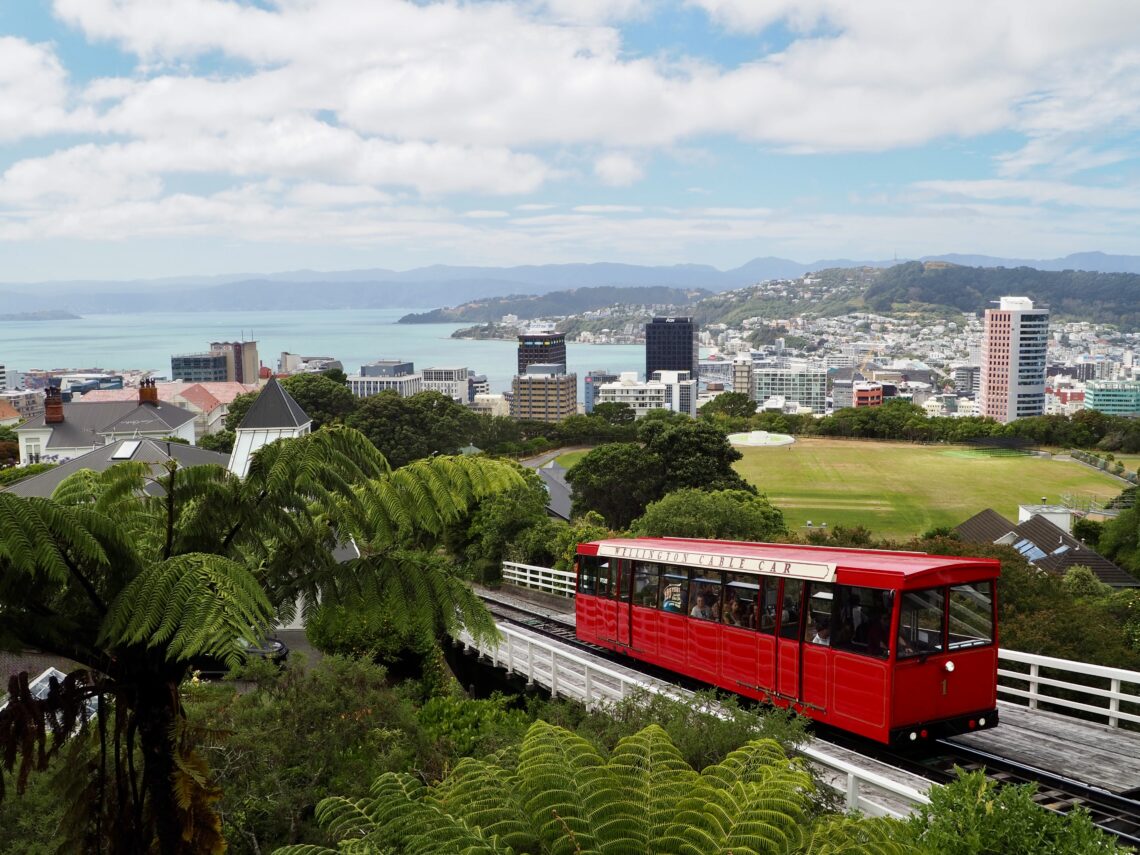
Highlights of Wellington
It’s already been 3 months since I moved to Wellington and in that time I’ve explored quite a lot of the city! I’ve been trying to pace myself, so I don’t run out of things all year, but between taking advantage of good weather and showing my brother around while he was visiting for a few days, I ticked off plenty things. As the capital of New Zealand, the city has a lot of historical and political significance. But it also has lots of opportunities to experience New Zealand’s native wildlife and natural scenery. So, here are some of the highlights of Wellington that I’ve seen so far!
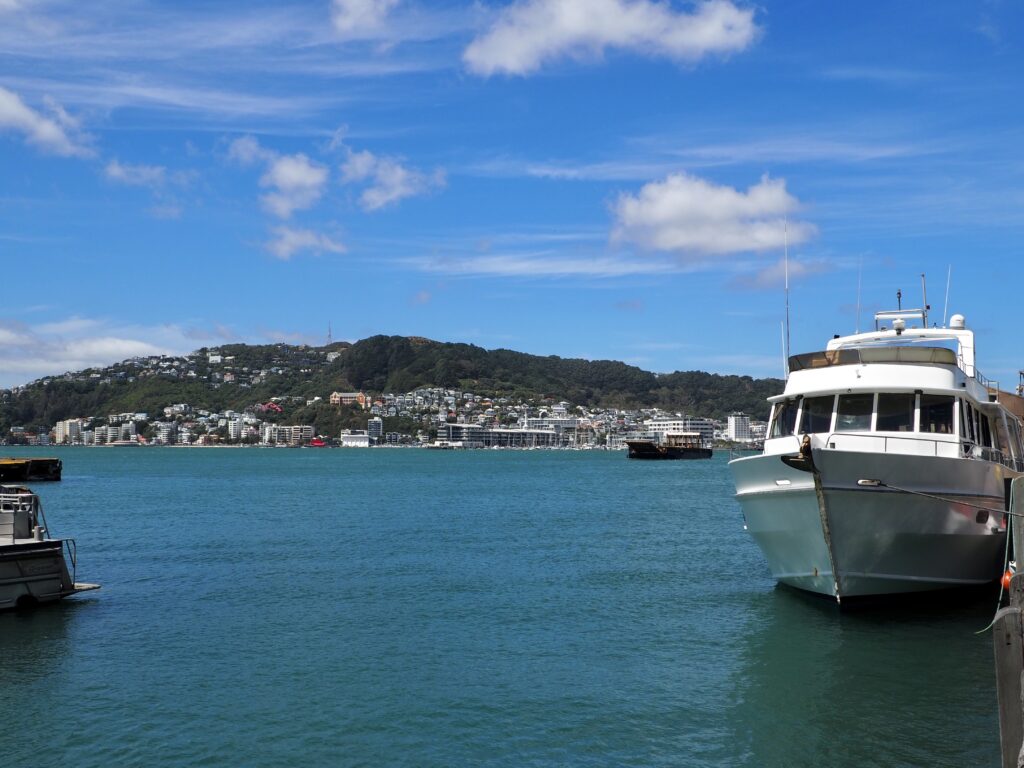
Wellington Walking Tour
As a former walking tour guide myself, I think these are one of the best ways to get a feel for a new city, so I did this during my first couple of weeks. While free walking tours are most popular in Europe, I also did a mix of paid and free ones in Canada and the USA too. New Zealand doesn’t have tipping culture (not even in restaurants) so I paid to joining the Walk Wellington tour, starting from the visitor centre. Even on a weekend, it ended up being just me and the guide (she said earlier in summer was busier) so I got a 2-hour private tour around the waterfront and city centre.
Wellington is a coastal city, situated around a deep harbour at the southern tip of the North Island. The waterfront area has a long walking trail, surrounded by parks, public art, and old boating sheds converted into shops and restaurants. There are sometimes events taking place down here too, such as the Dragon Boat Festival, or the Waitangi Day celebrations in Waitangi Park. It’s a pretty lively area, especially on weekends, and a nice option for a coastal walk.
The tour also covered the city centre, along Willis Street and Lambton Quay and past the various government buildings. The guide showed me some hidden historical sites, such as the mechanical clock and buried shipwreck in Old Bank Arcade, and Old St Paul’s Church, dating from the 1860s. The tour was a great introduction to Wellington, and New Zealand in general, with lots of interesting stories and recommendations for places to visit in future.


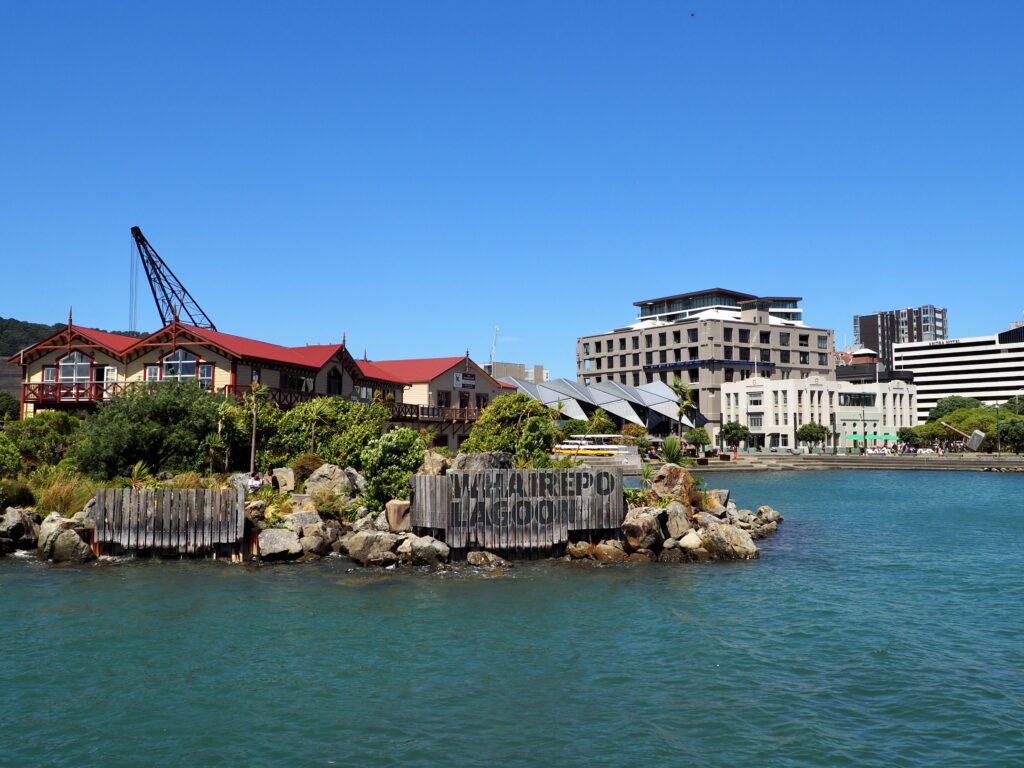
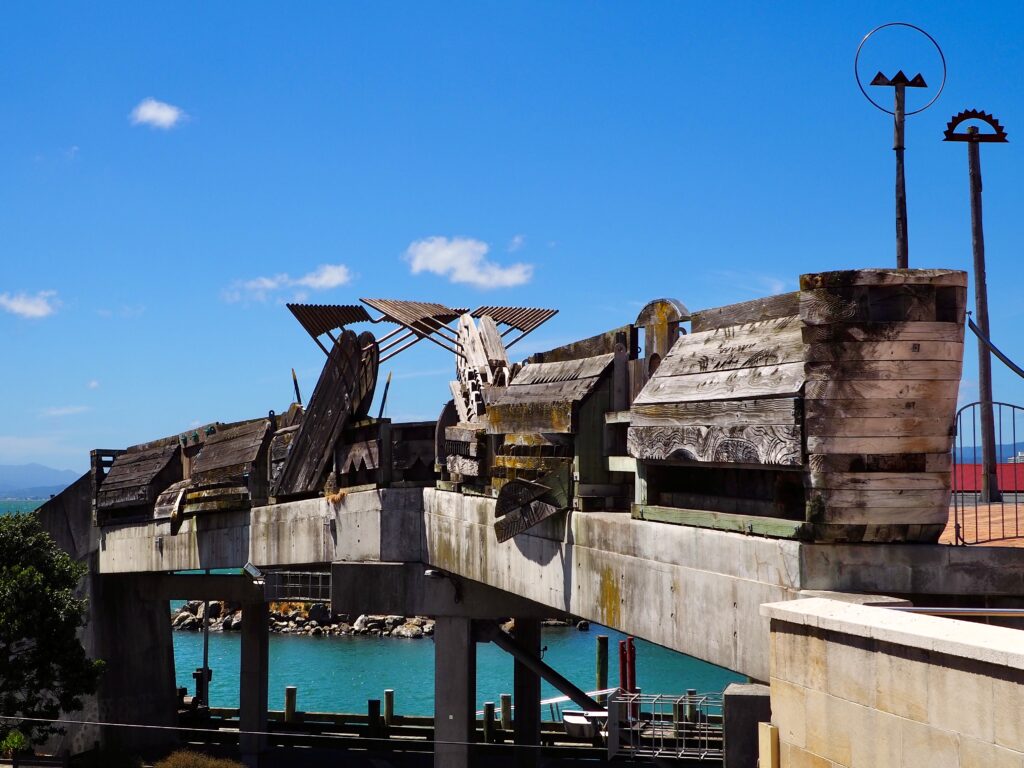
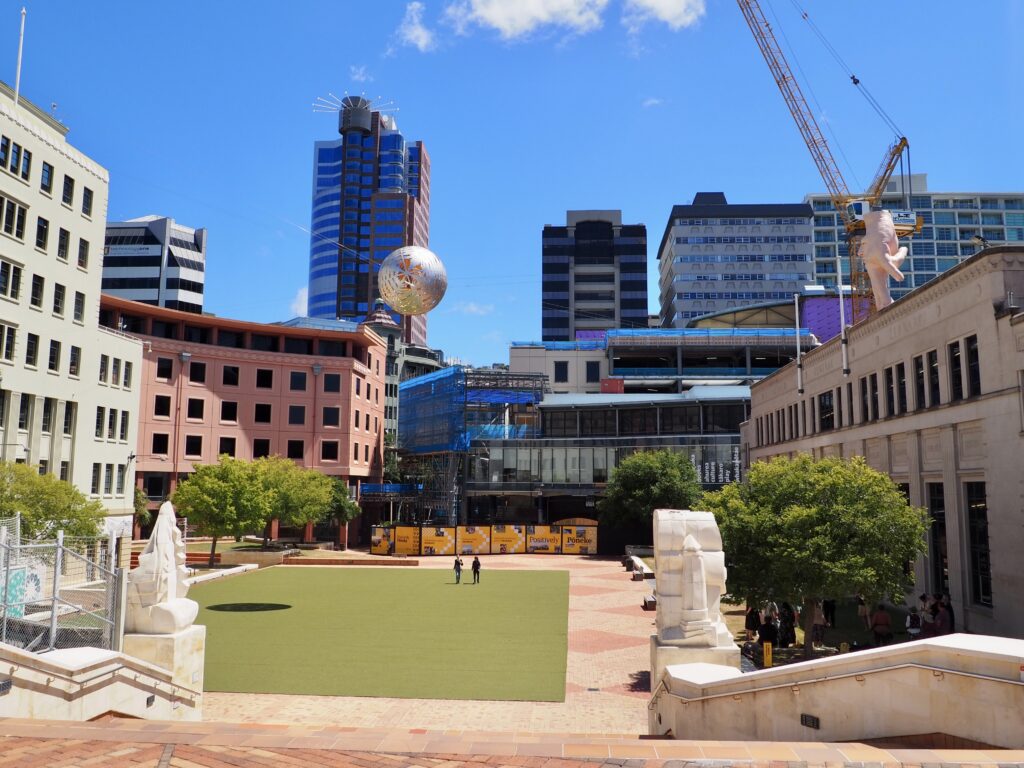

Mount Victoria
Prior to arriving here, I had no idea Wellington had so many hills! It’s impossible to walk anywhere outside the city centre without some up and down involved. Mount Victoria is the most central of them, just east of the city centre and overlooking the harbour. It’s covered in thick forest, criss-crossed by hiking and mountain biking trails. The first time I came to the mountain, I actually skipped the peak and took a different trail along its length (it’s kind of like a long ridge). Mostly because I wanted to find the “Hobbit’s Hideaway” filming location from the first Lord of the Rings movie. I did a rewatch of the trilogy shortly after arriving in New Zealand, as refresher before seeing these sorts of locations! I wouldn’t have recognised this one otherwise.
The next time, I actually made it to the summit of Mount Victoria – which is also accessible via driving (though parking is limited) or by bus. From the peak, you get a 360-degree view of Wellington, so I was glad I chose a clear day! The city centre and surrounding neighbourhoods are visible to the west, overlooking the bright blue waters of the harbour. Then as you slowly spin around, you see Evans Bay and the Miramar peninsula to the east, connected by a narrow spit of land that the airport sits on. The peninsula actually used to be an island until the Haowhenua earthquake in the 15th century uplifted the land between!
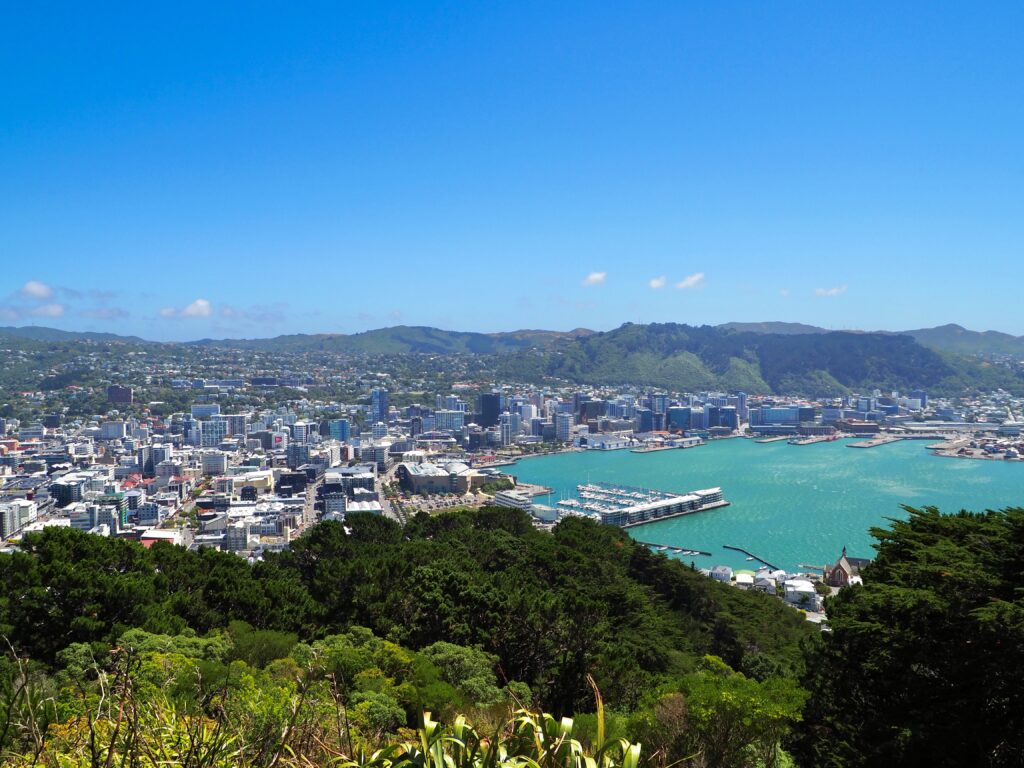
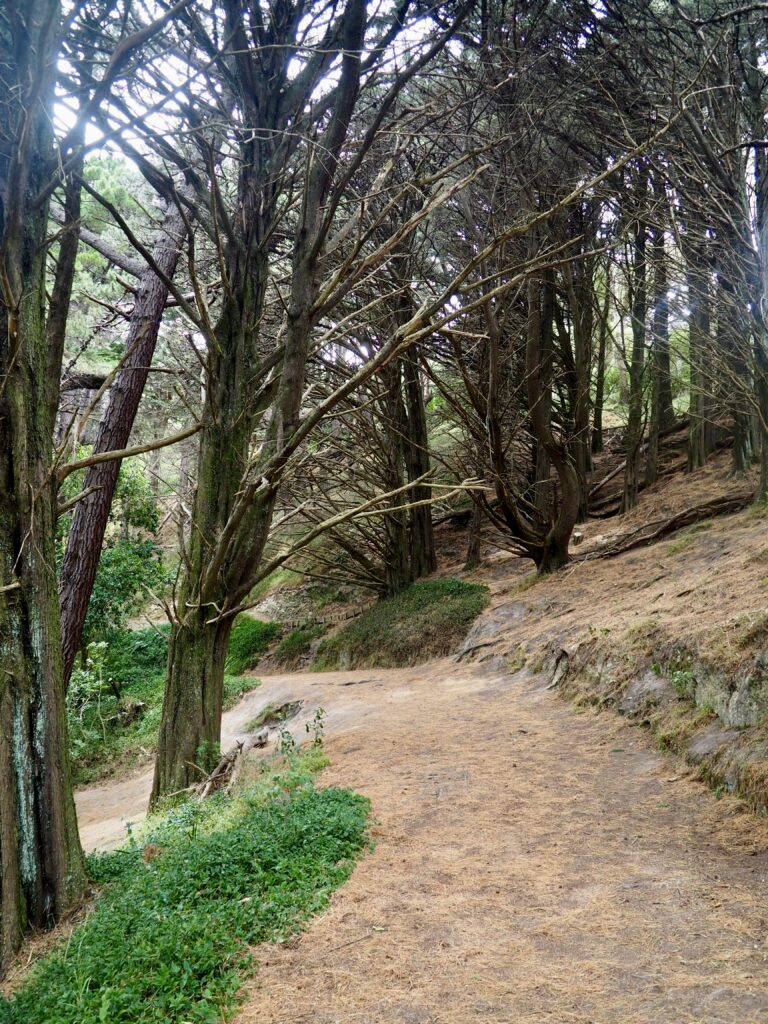
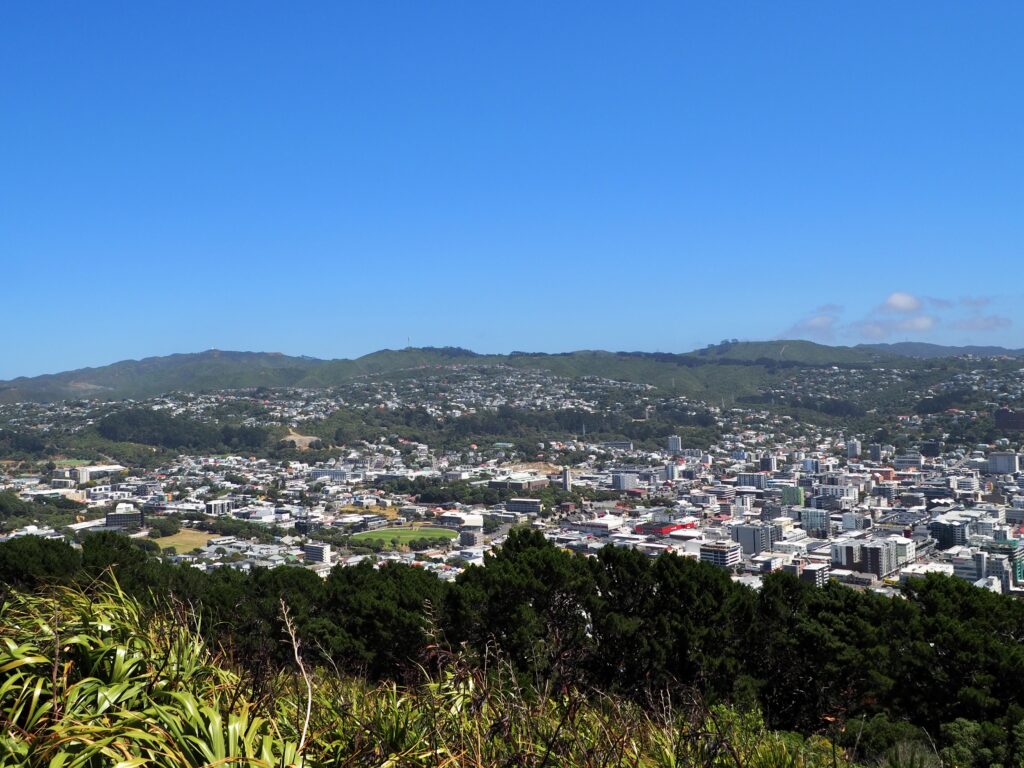
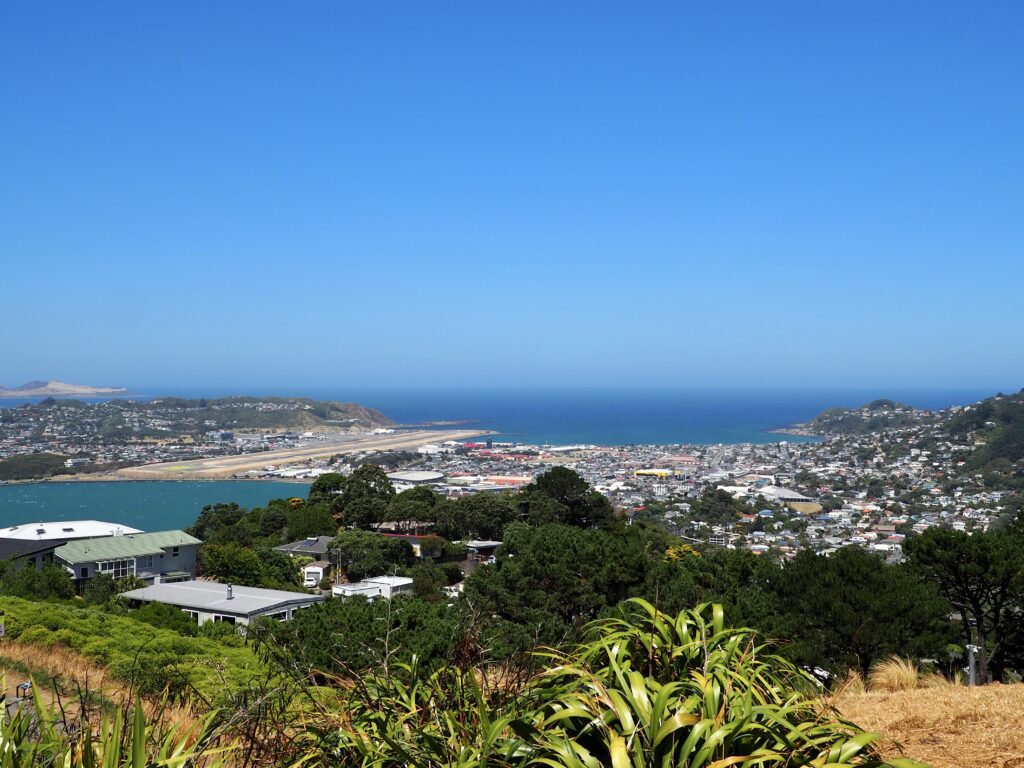
Te Papa | Museum of New Zealand
As the capital city, Wellington is home to the Museum of New Zealand, or to use its Te Reo Māori name, Te Papa. It’s a free national museum, so I’ve been a few times to slowly work my way round most of its exhibits. I think the only one I haven’t been to is the Gallipoli one, since war history has never been my thing, and I don’t have a personal connection to it like many New Zealanders do. I liked the natural history exhibit a lot, as I didn’t know just how early New Zealand split away from other land masses, even Australia, leading its totally unique ecosystem and indigenous wildlife that consists mostly of birds, reptiles, amphibians, fish and insects.
The Māori exhibit was also really cool, with these incredible intricately carved war canoes and a large meeting house. There’s also an exhibit on how humans, particularly European settlers, shaped the land, so I felt like I got a good overview of the country’s history and culture across these exhibits. Other Pacific islands and the commonalities across Polynesia are featured in another display, then there’s a whole art exhibit on the top floors. There’s a cafe and gift shop too, as well as temporary paid exhibits (currently dinosaurs, which I haven’t been to) and occasional events. It’s built down on the waterfront, so a great highlight of Wellington for anyone visiting. I’m sure I’ll be back again too!
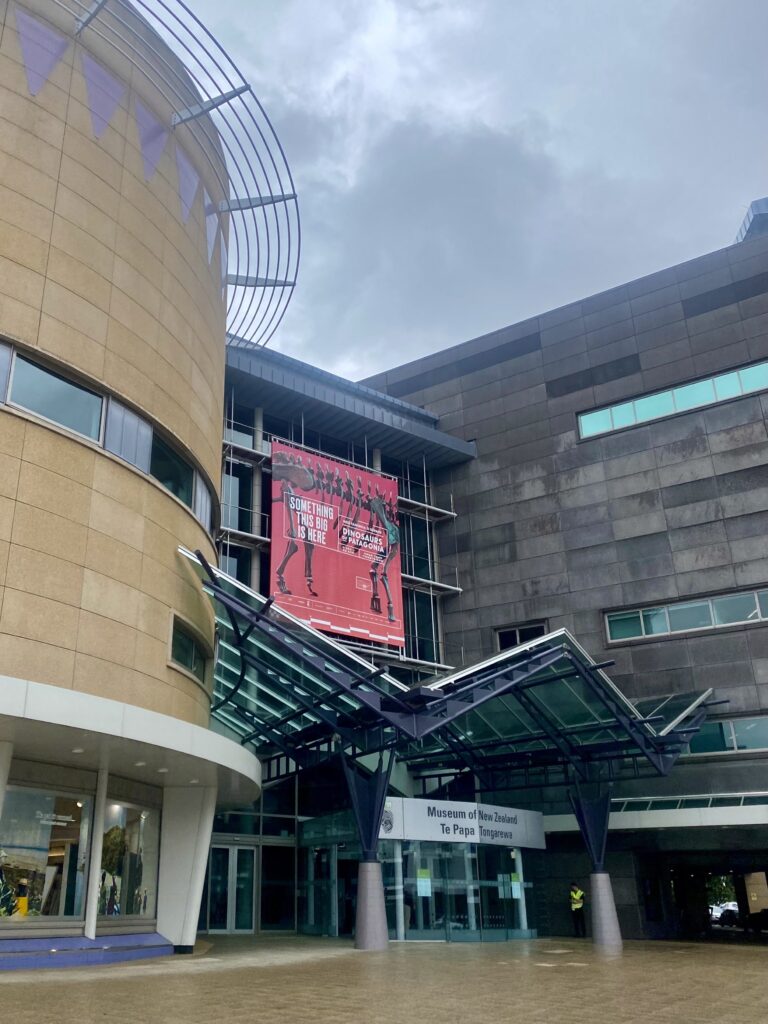

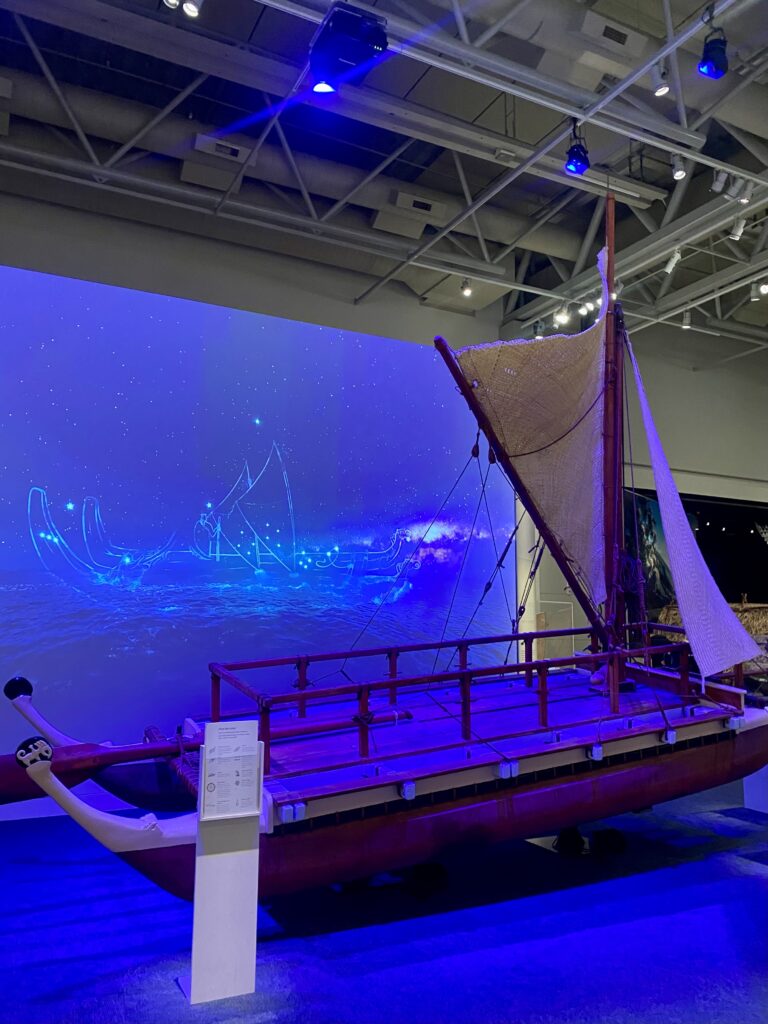
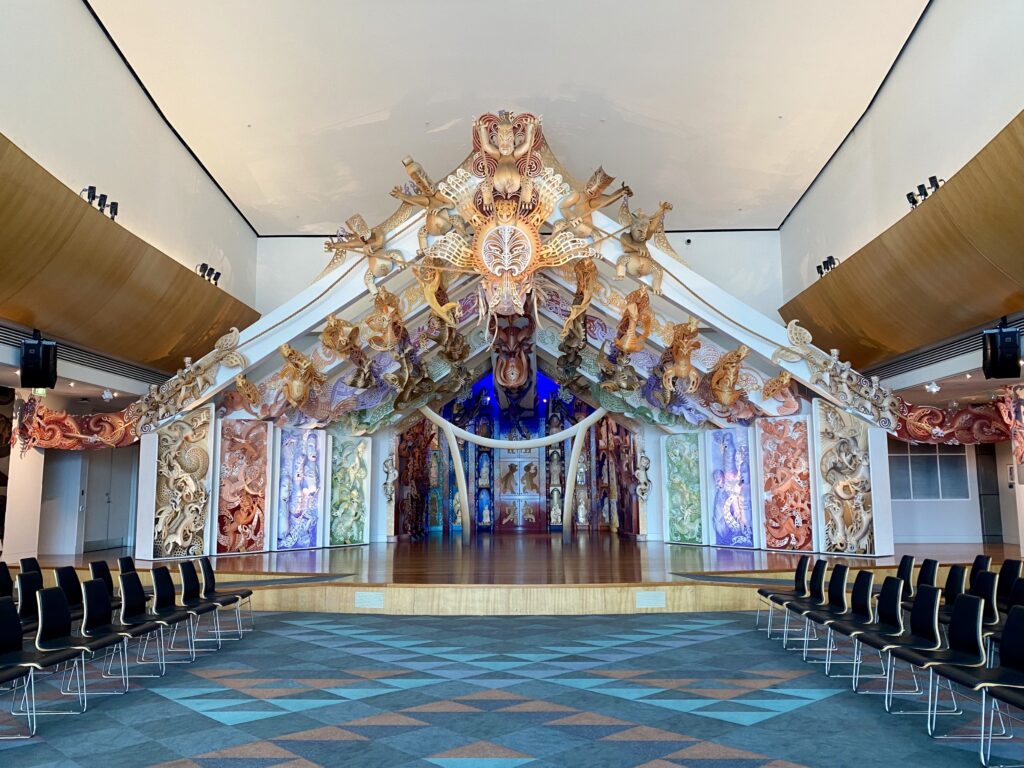
Zealandia
I went here with my brother and enjoyed it so much that I ended up buying an annual membership. Zealandia is an eco-sanctuary where native birds can roam freely within its fences. Of course, flying birds can come and go as they please, but many return since it’s safe from predators. Zealandia also helps with breeding and conservation programmes since many of these endemic species are at risk.
There’s a main walking path up the lakeside and dozens of longer hiking trails stretching out further into the forest. I’ve yet to explore those! There’s usually a ton of birds around the main trail, including tūī, hihi, titipounamu and pīwakawaka, which I’m all slowly learning to identify! The lake has several shag species, which head to sea to fish each day. Further along the trail, you’ll find dozens of kākā, a type of parrot, around the feeders set up for them. And it’s not just birds, as a large population of tuatara, an endemic reptile species, live in the forest.
The sanctuary is also home to New Zealand’s most famous bird, the kiwi. Since these are nocturnal, you’re unlikely to see any by day, but there are Night Tours available, which I plan to do eventually! But my favourite are the takahē. This flightless bird was thought to be extinct, before it was rediscovered and is making a comeback thanks to breeding programmes. They’re generally found in mating pairs, of which Zealandia had two, until Nio passed away last month, leaving Orbell on his own by the lake, their usual haunt. Waitaa and Bendigo stay further up the valley, though I’ve yet to find them myself. It was a bit sad seeing Orbell solo last time! I could watch him wander around for ages though, it’s very peaceful.
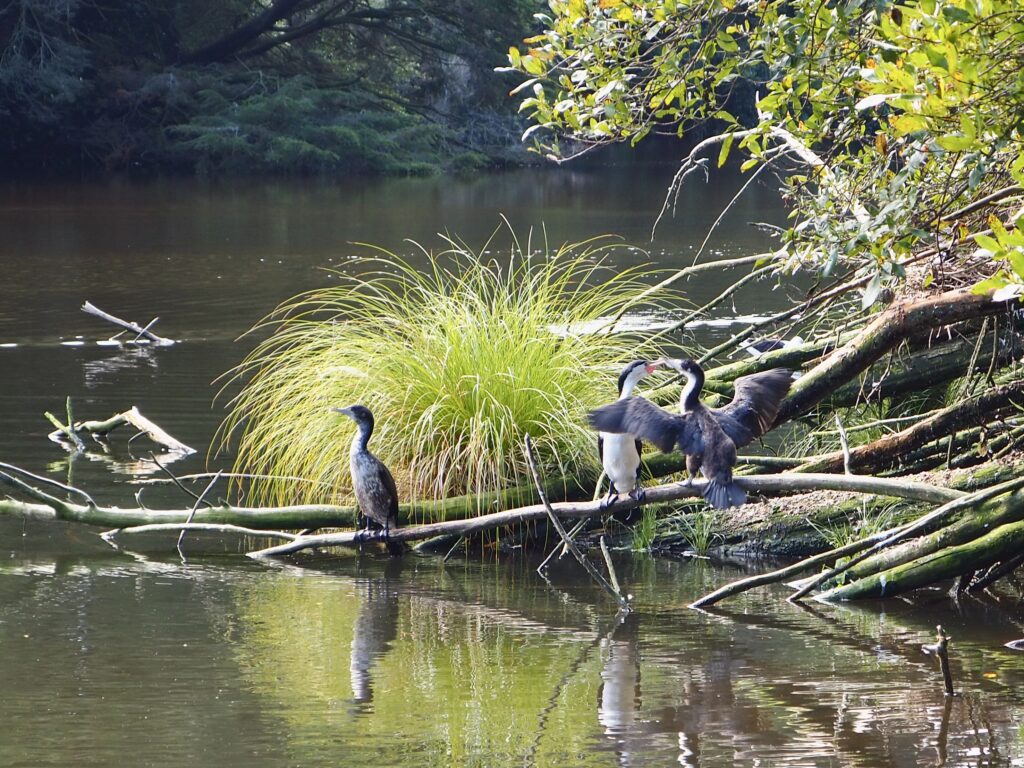
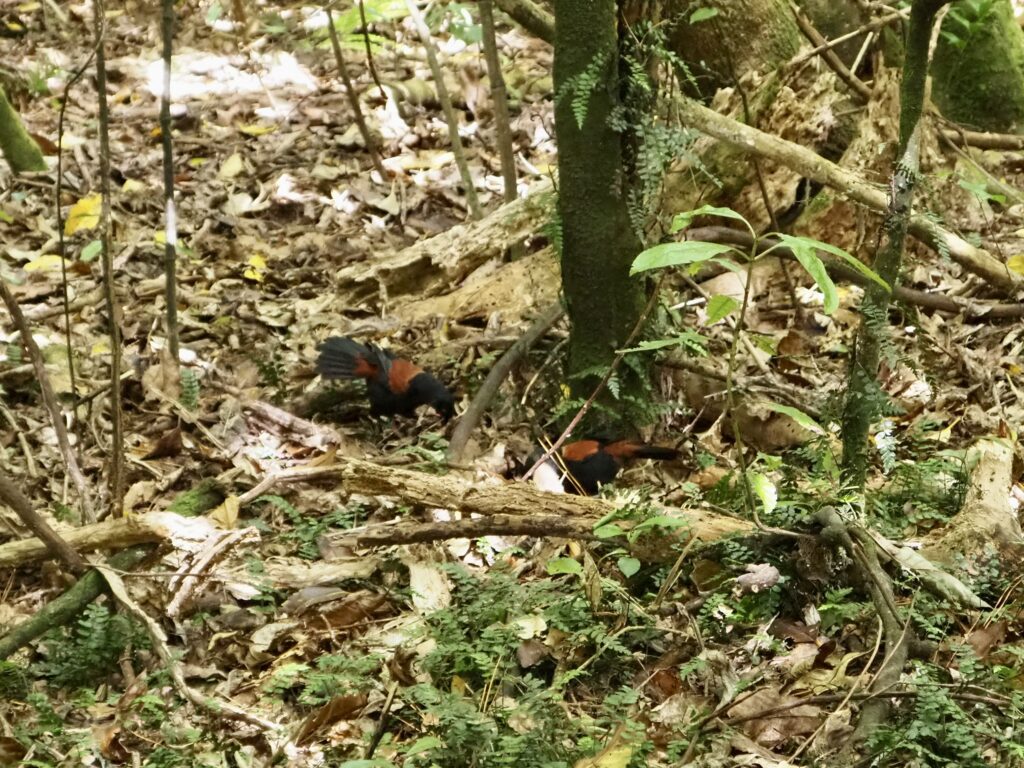
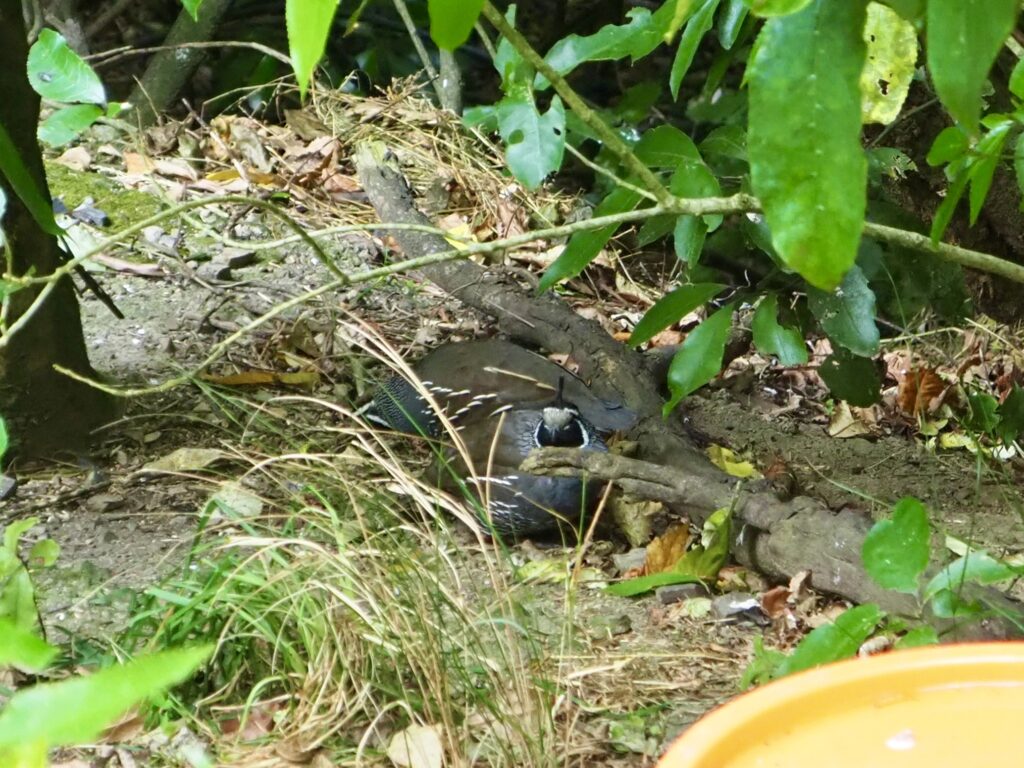

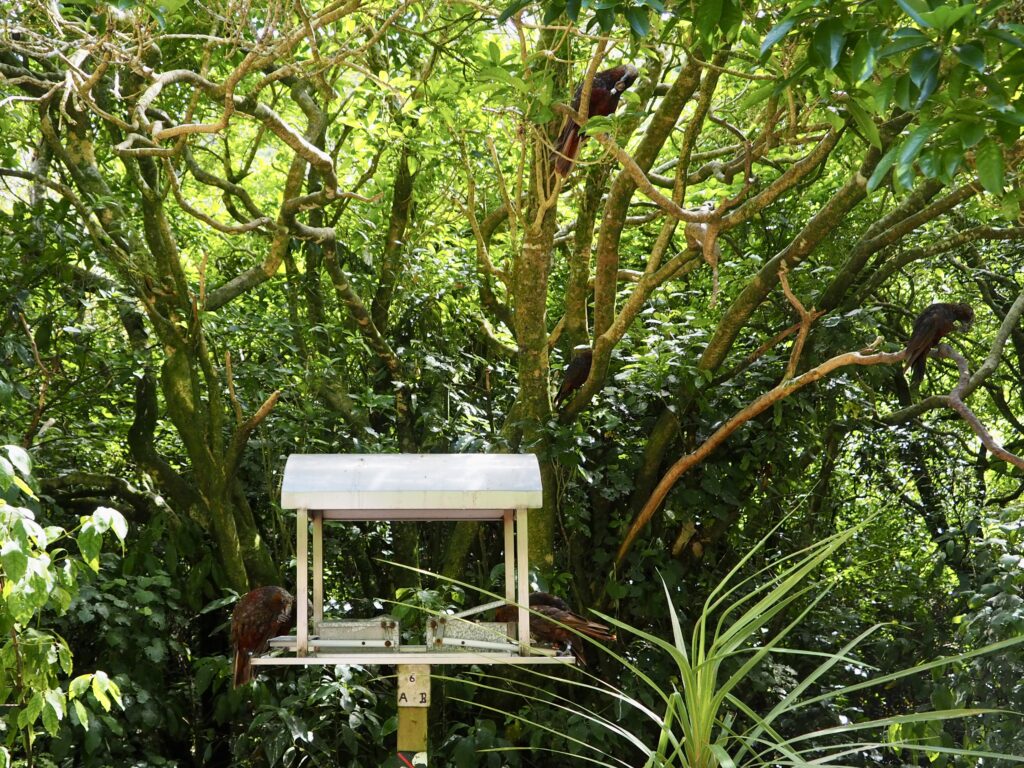
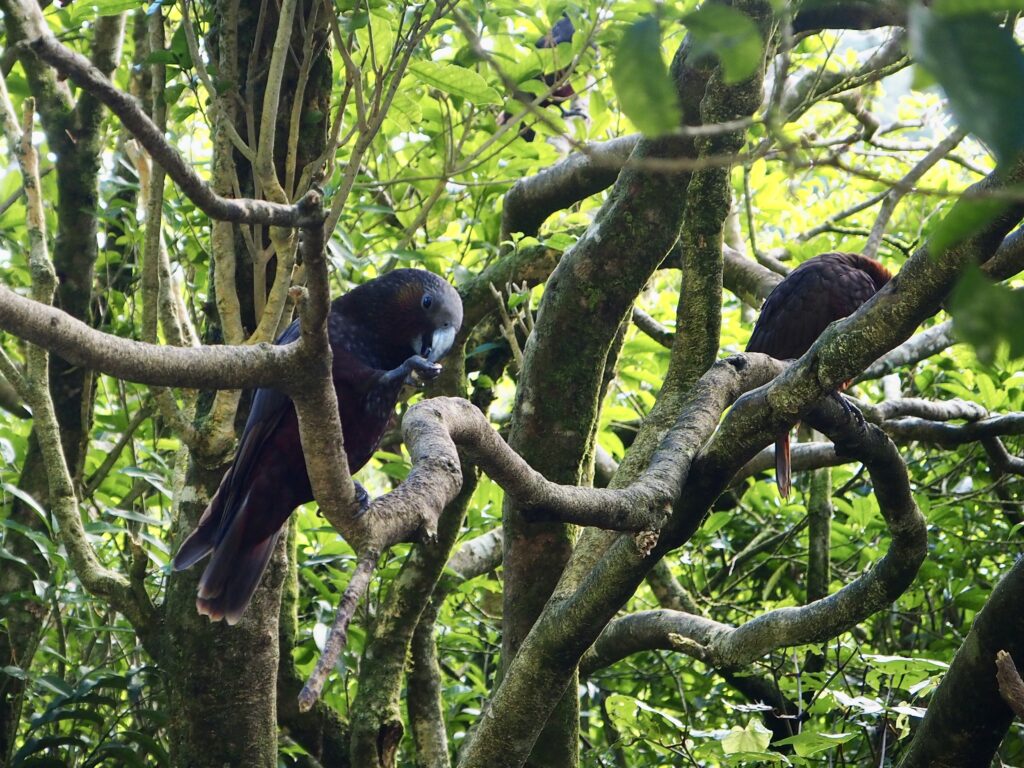
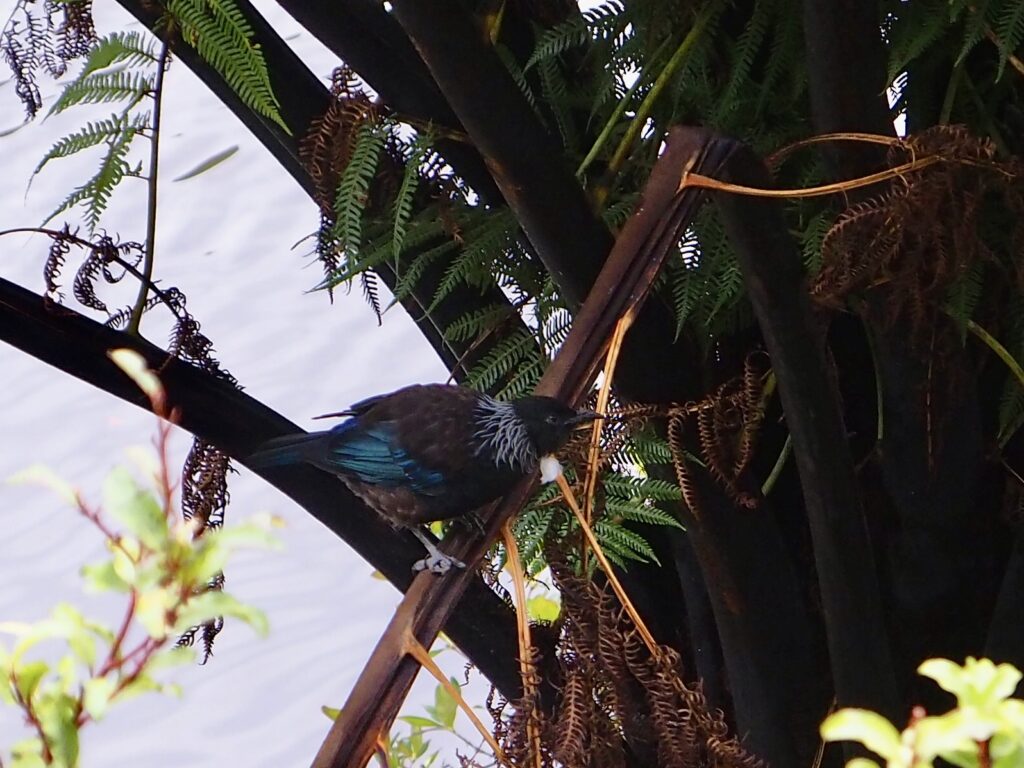

Matiu / Somes Island
My brother and I got lucky when he visited, as I realised it was the last weekend you could visit Matiu / Somes Island for several months! It’s closed this autumn and winter while they renovate the wharf, so we got there just in time. The island sits in the middle of Wellington harbour and takes about 20 minutes to reach by the small foot ferry. It has an interesting history, since it has been a Māori settlement, a human quarantine station by early Europeans, and an internment camp and gun emplacement during the World Wars. It’s now owned by a local Māori collective again, but managed by the Department of Conservation.
Visitors can spend the day walking and exploring, or you can even reserve accommodation to spend the night. We went for a half-day visit, which was enough time to walk a loop and see some of the historic sites. The walking trail gave us views all around the harbour and back to Wellington itself. They’ve tried to restore a lot of the indigenous plants and encourage endemic wildlife to return. There are a lot of tuatara living here, but we didn’t see any. Only seagulls! Oh, and sheep. There’s a small flock of sheep which claim to be “New Zealand’s most photographed”. My brother had just finished a shearing season, so he was kind of over seeing even more sheep! We wandered past the gun emplacements and visited the tiny museum as well, before heading back to the wharf for the return ferry.

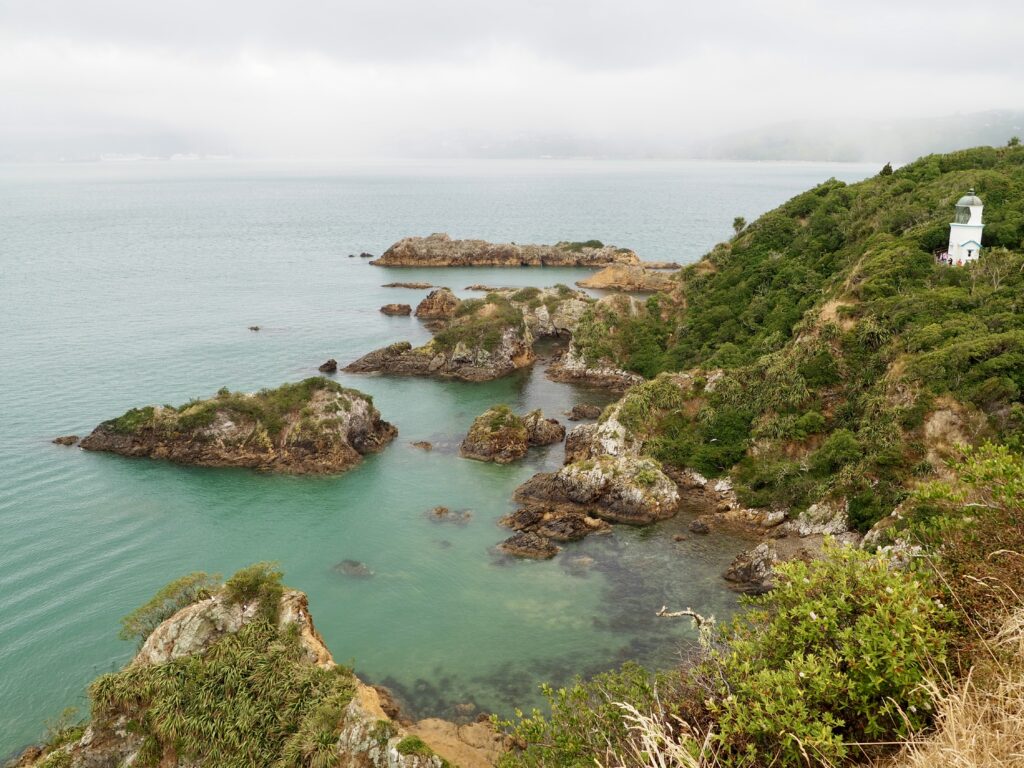

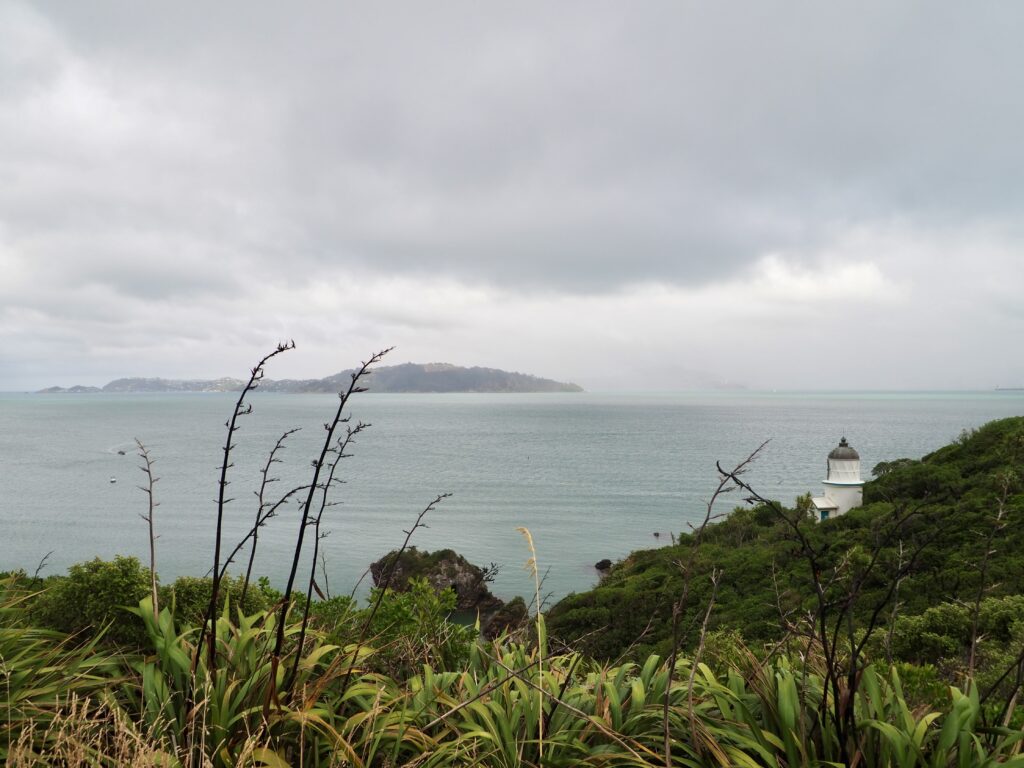
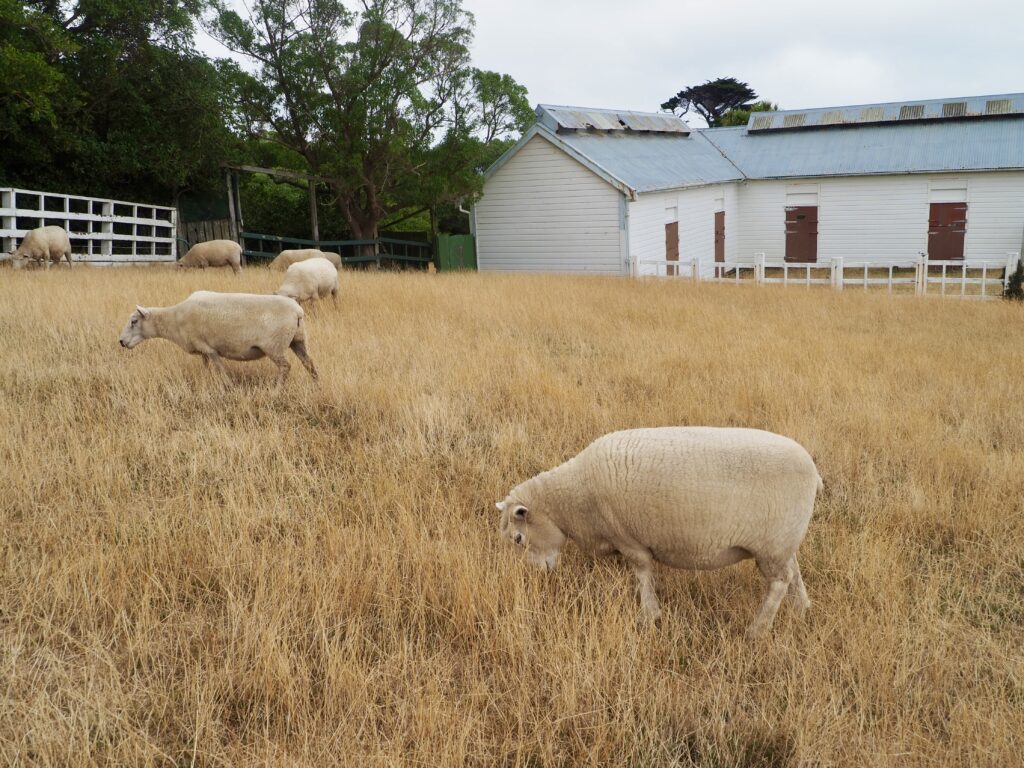
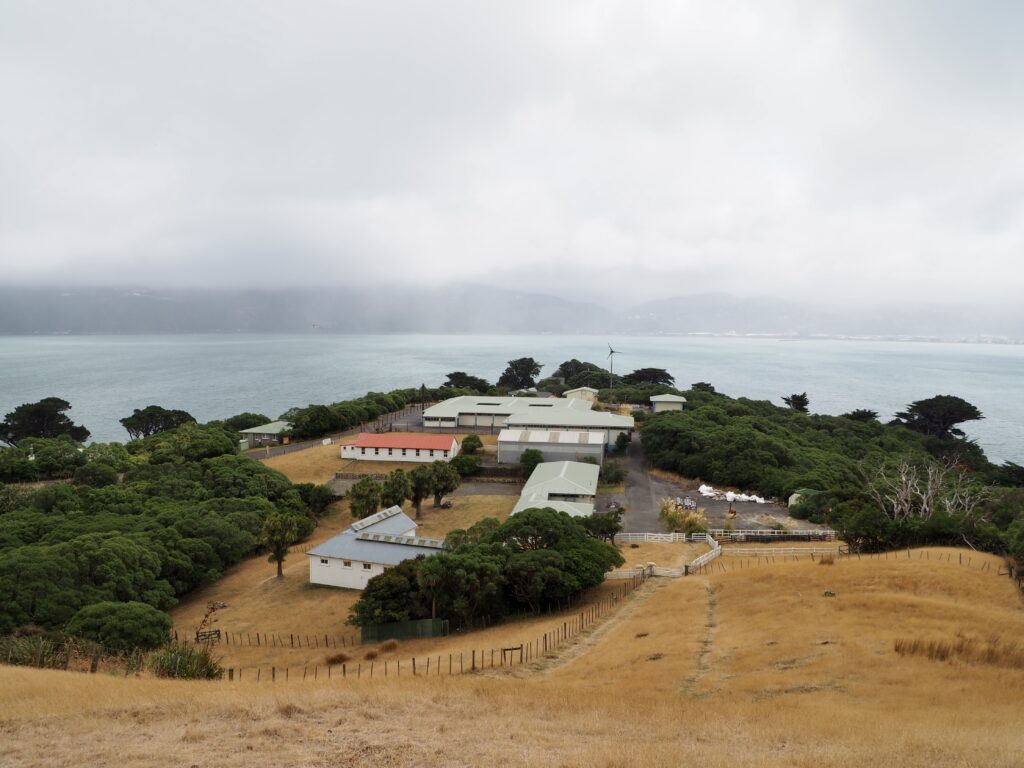
Weta Workshop
This was another place I visited with my brother. Wētā Workshop makes costumes, props, weapons, prosthetics, models and so much more! Lord of the Rings really put them on the map, and since then they’ve created items for hundreds of other movies and TV shows. Including The Hobbit and Rings of Power of course, as well as Marvel, the Chronicles of Narnia, Avatar and Dune. It’s grown into a huge workshop, based right here in Wellington. My brother has never seen Lord of the Rings, which was what I knew about Wētā from. But when we realised the other movies they’d done, which he’s seen and liked, he wanted to check it out too.
It’s an active workshop and you can’t see what they’re working on currently – because spoilers! You also can’t photograph most of what they show you because of copyright. The visit is a guided tour around a few displays they’ve set up, showing you some of what they’ve made and how they make it. The room full of props and costumes from Lord of the Rings and Narnia was probably my favourite. We even got to hold a couple of swords! We also got to meet one of the miniature artists and handle some of his work. He explained how many of the shots in LOTR were actually done with miniatures and forced perspective! It’s not a very long tour, but it was super cool to see all these iconic props and interesting to learn how some of it is made. Definitely one of my highlights of Wellington so far!


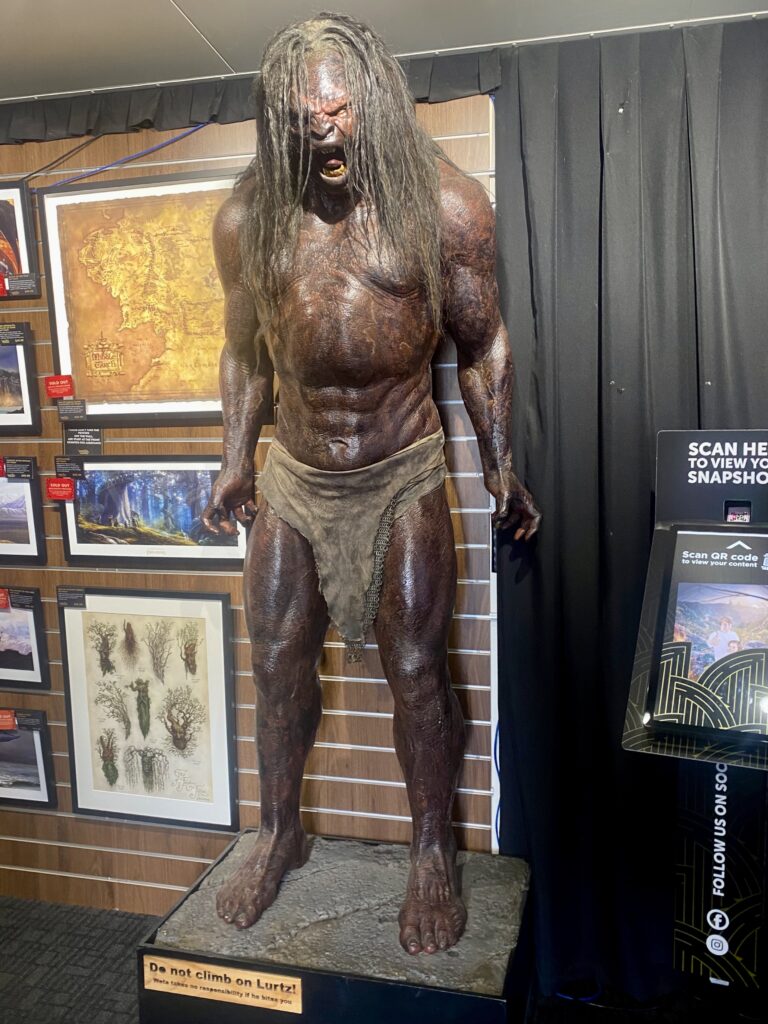
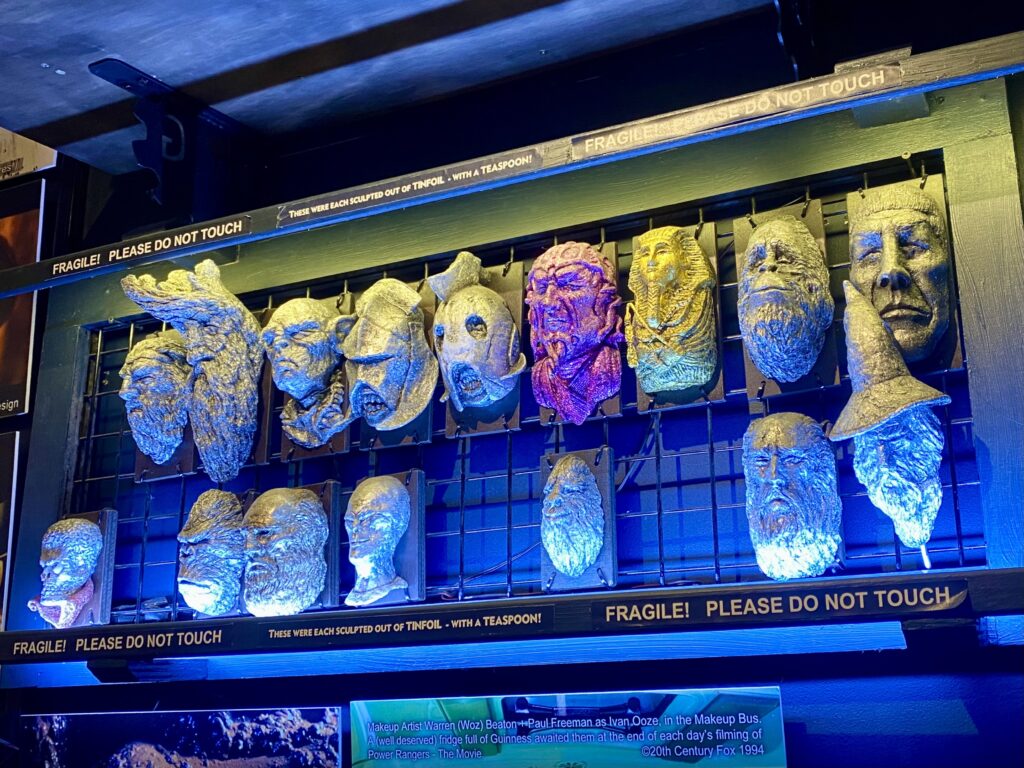
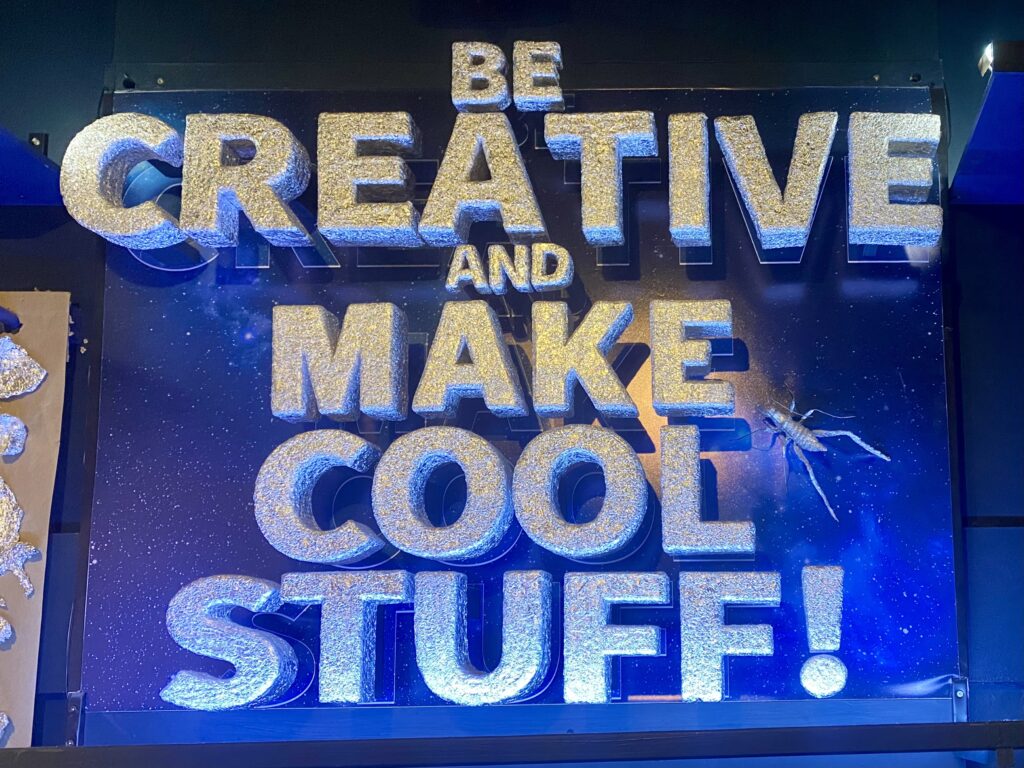
Botanic Gardens
My visit to the Botanic Gardens actually started with ticking off another iconic sight – the Wellington Cable Car. Since the gardens are on a hillside, you can take the cable car up from Lambton Quay if you don’t want to walk. It’s not the cheapest ticket to ride, but I figured it was a fun experience to have once! From the upper station, you get a great view of the cable car itself with the Wellington skyline beyond it. There’s a small museum about the history of the cable car too.
The garden entrance is right next to the station, and starting here means that the walk is all downhill. Of course, you can also enter the gardens at the bottom, if you prefer an uphill walk! I caught the gardens in late summer, when plenty of it was still in bloom. There are lots of different styles and themes within the gardens to explore. Plus several public artworks dotted throughout. At the bottom of the hill, I reached the rose garden, with a fantastic view across it before descending the stairs. There’s a greenhouse here too, next door to the cafe where I stopped for lunch. The gardens are one of Wellington’s free attractions, so I’m sure I’ll visit again!
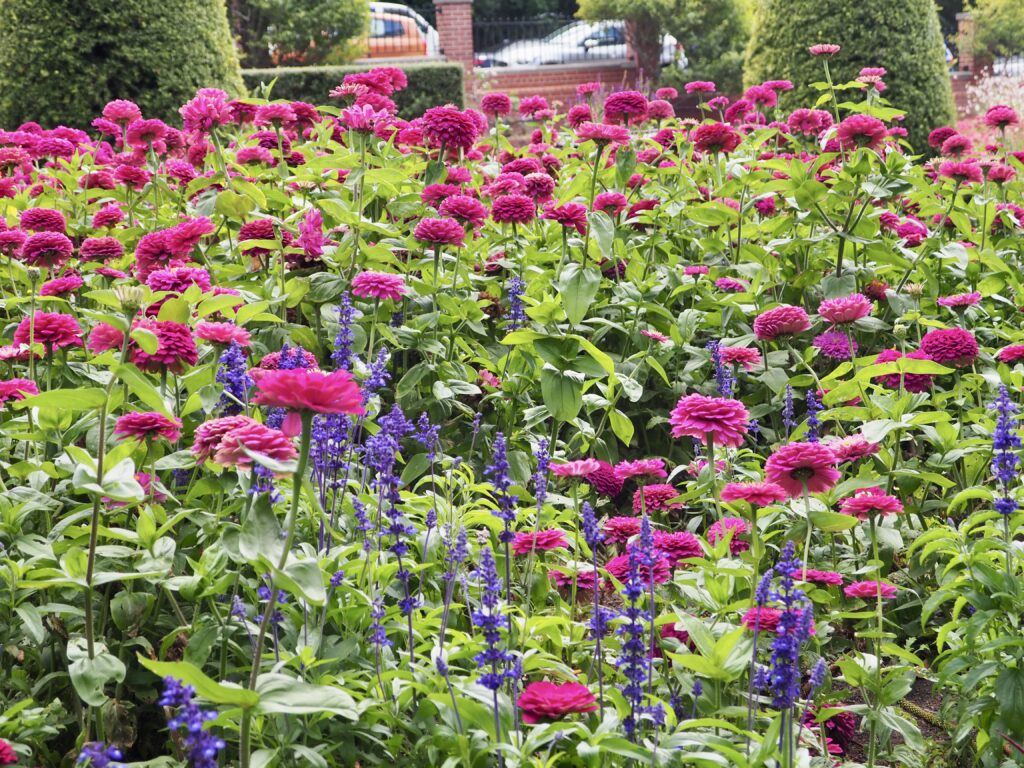
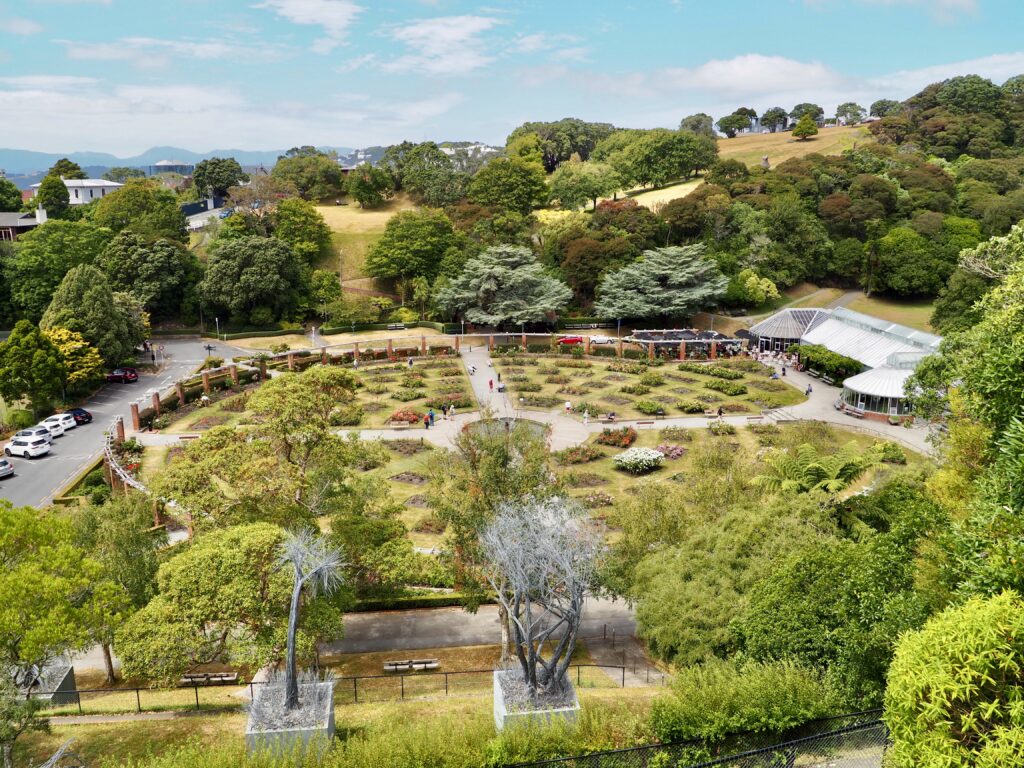


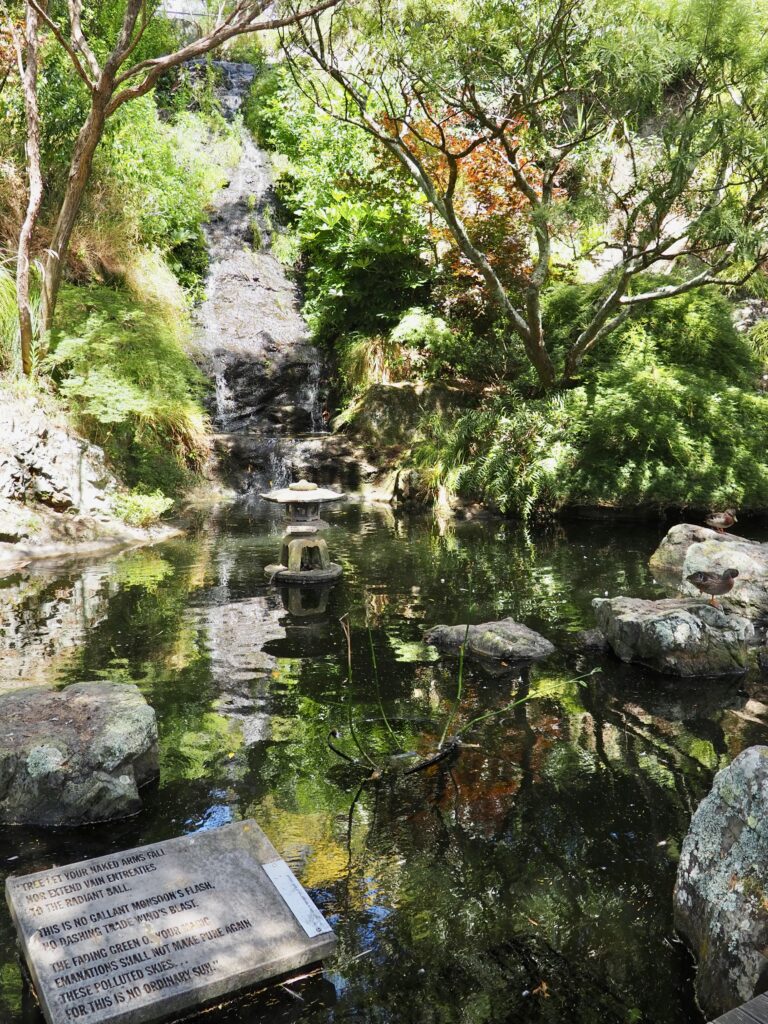
New Zealand Parliament
As the country’s capital, Wellington is naturally home to the New Zealand Parliament. You can enter the grounds to view the buildings from the outside. The Beehive is the most iconic of them, a massive, circular glass structure. It’s actually the newest of the three parliament buildings though, dating from the 1970s. The central building is Neoclassical in style, built in the 1920s, and the last is the Gothic Revival library from 1899. They are certainly all pretty different to each other when you see them all lined up!
It’s also possible to tour the inside of the parliament buildings. You have to join a guided tour, which are free but should be booked in advance to secure a spot, as the groups are small. While I do take some interest in politics and have opinions, I’m not so invested that I understand how all aspects of parliaments work. And of course, not being an NZ citizen, I have even less knowledge of theirs. But the tour focused a lot on the architecture, history and function of the buildings, so I was able to follow along well enough. The Beehive houses mainly MP offices, so we couldn’t see very much of it. Instead, we spent most of the tour in the other two buildings. We saw the library, various meeting rooms, some artwork and most notably, the debating chamber. Which looks an awful lot like the British one!
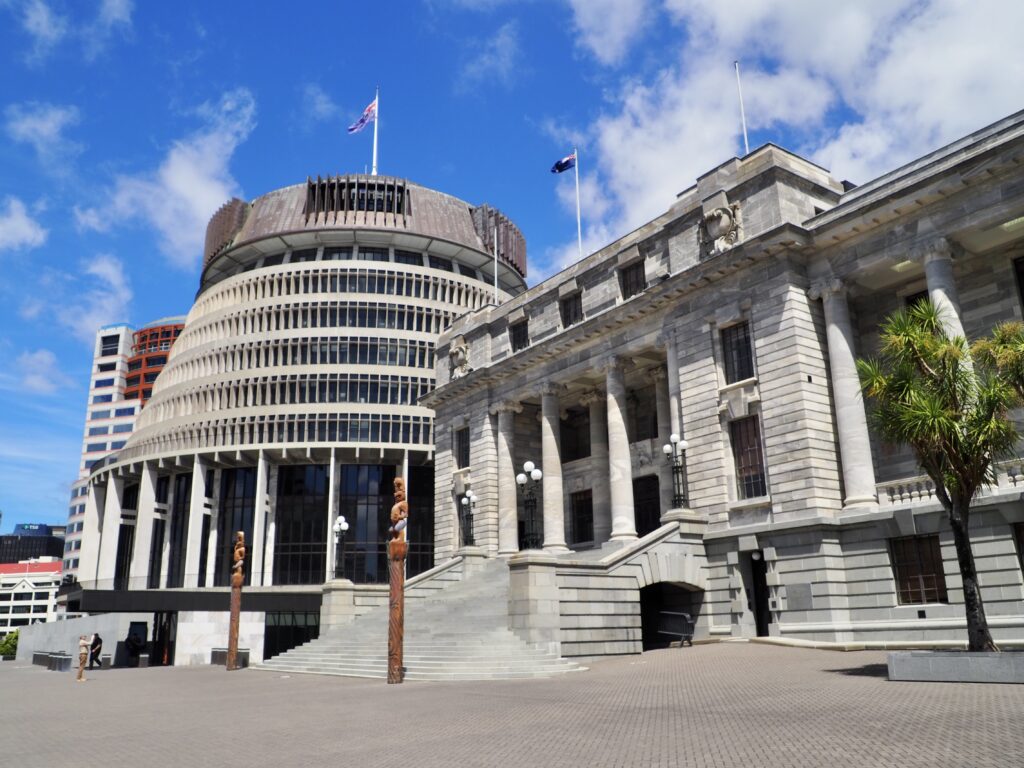
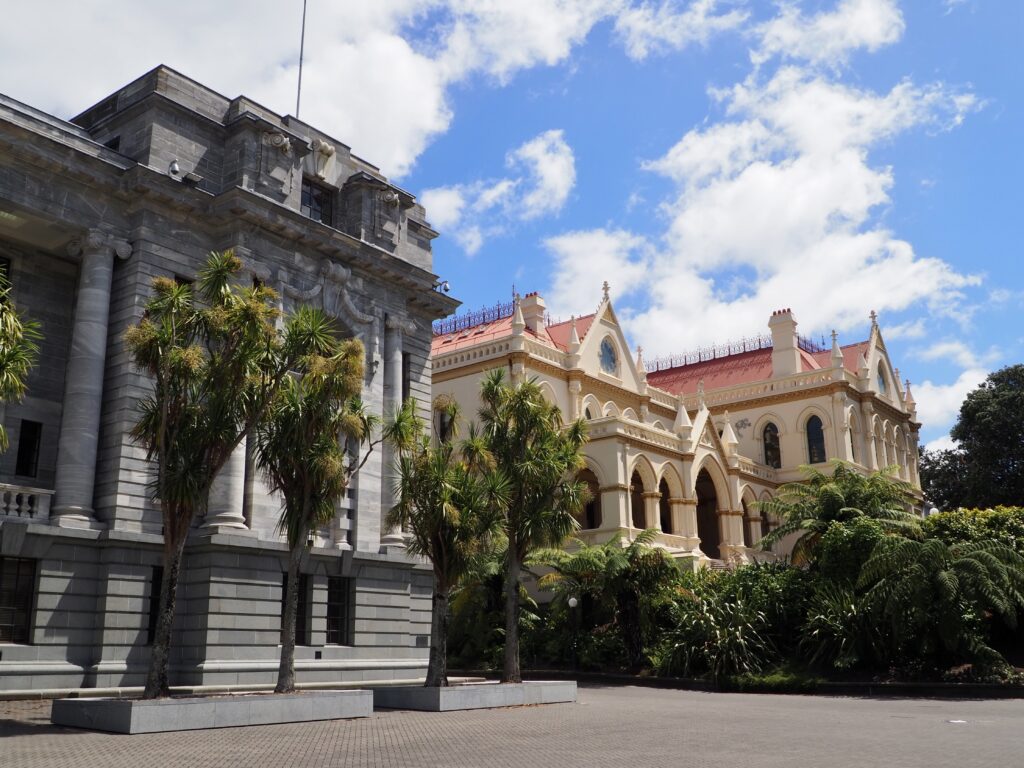

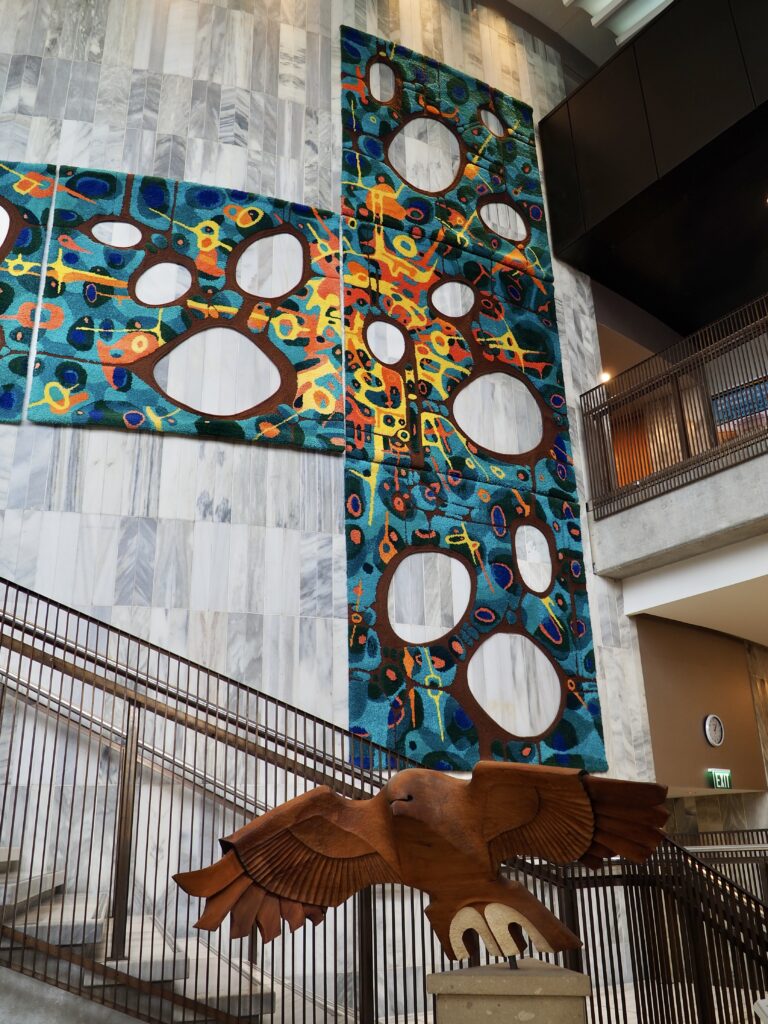

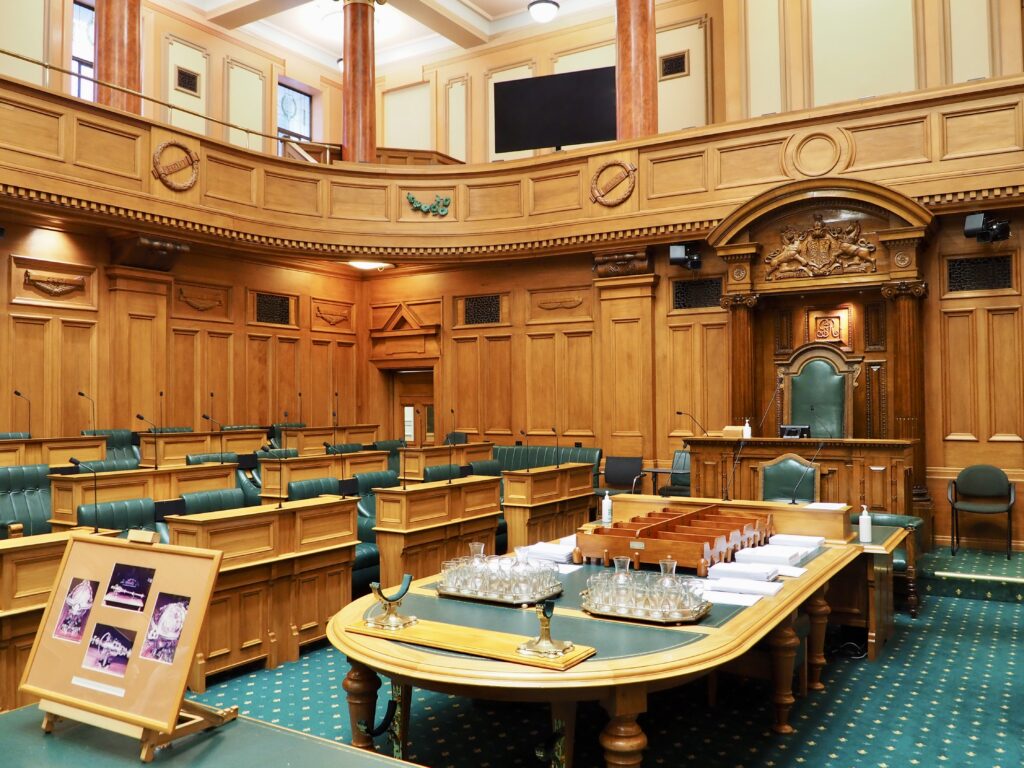

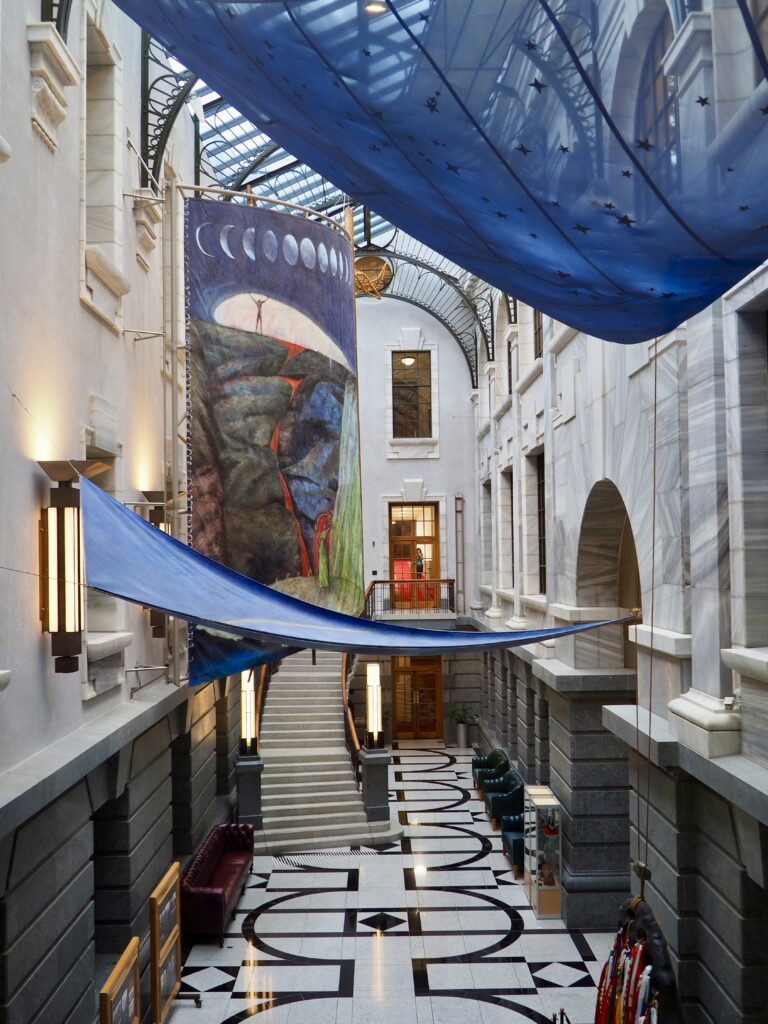
Wellington Museum
Yet another free attraction! While Te Papa looks at New Zealand as a whole country, the Wellington Museum, as the name suggests, is about just this city. I imagine some visitors overlook it in front of Te Papa, but it’s worth a visit too! It occupies the Bond Store, a historic cargo warehouse down by the waterfront. The ground floor houses an exhibit on Wellington’s geography, with its wind and harbour and the entire country’s proclivity for earthquakes. Ascending the floors, there’s a lot about maritime history, which has shaped much of Wellington’s history. As well as Maori treasures, called taonga, and theatrical retellings of their creation myths.
There are also some more unusual artefacts! Assortments of trinkets and memorabilia from the last century, some with unknown origins or uses. The Attic on the top floor starts with a time machine that whizzes you back through a millennia. Then, explore the weird and wonderful stories and artefacts, from stuffed lions to alien encounters to local sporting heroes. It was really fun to see all these unique, different local stories, rather than just major historical events!
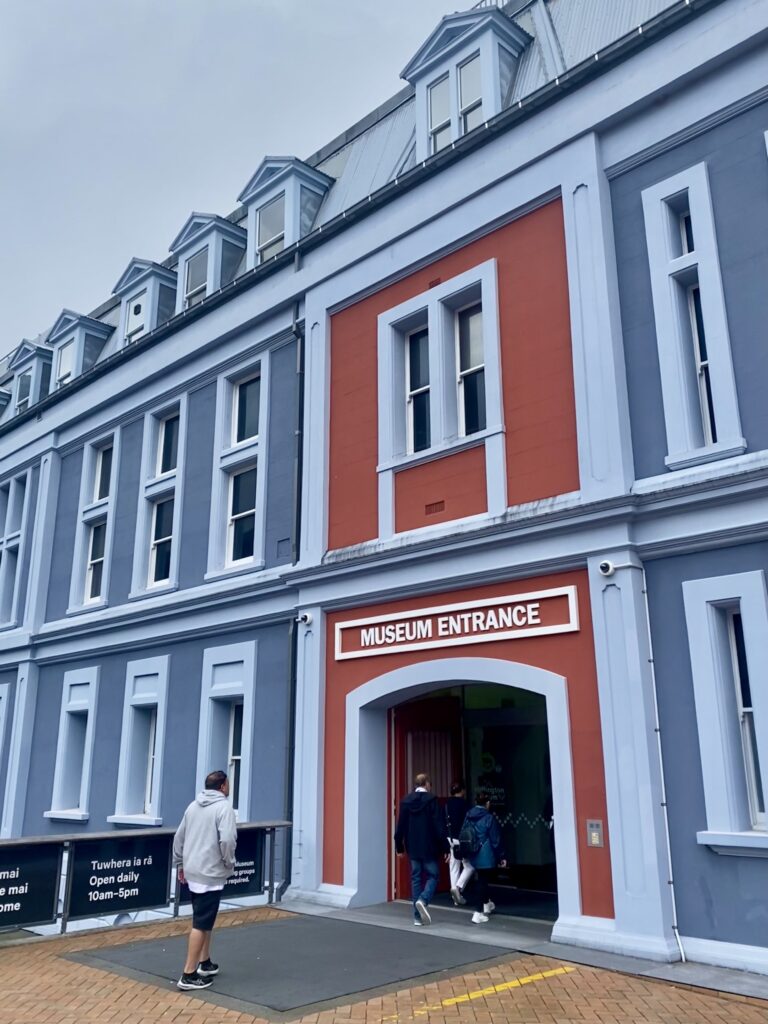

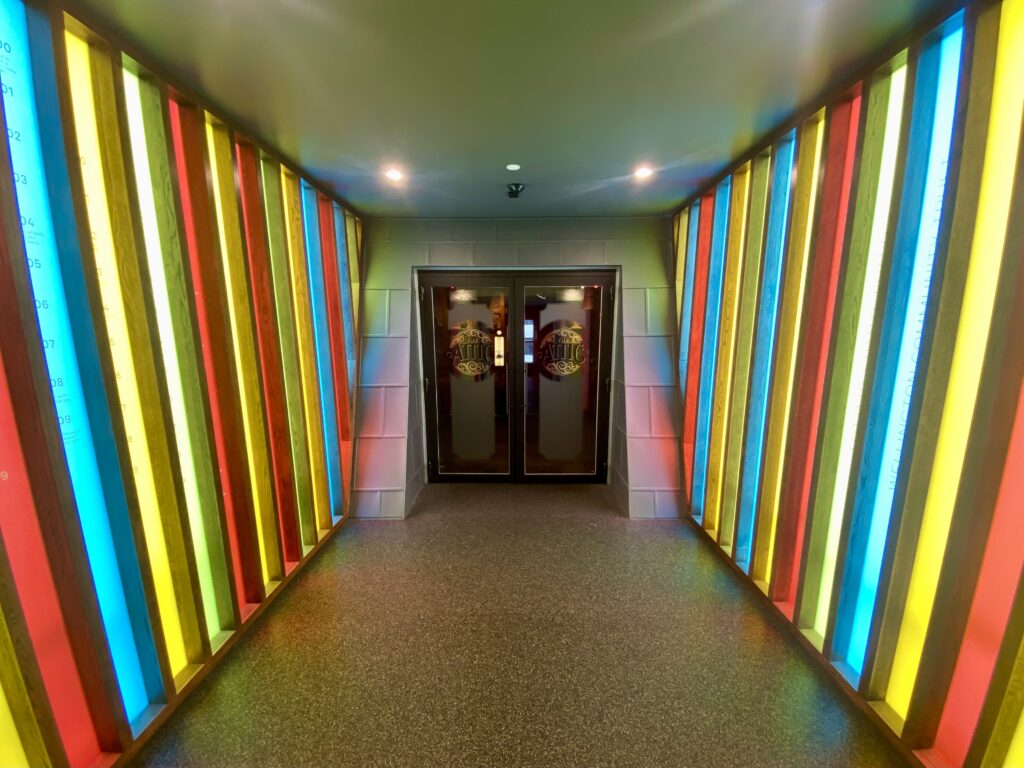

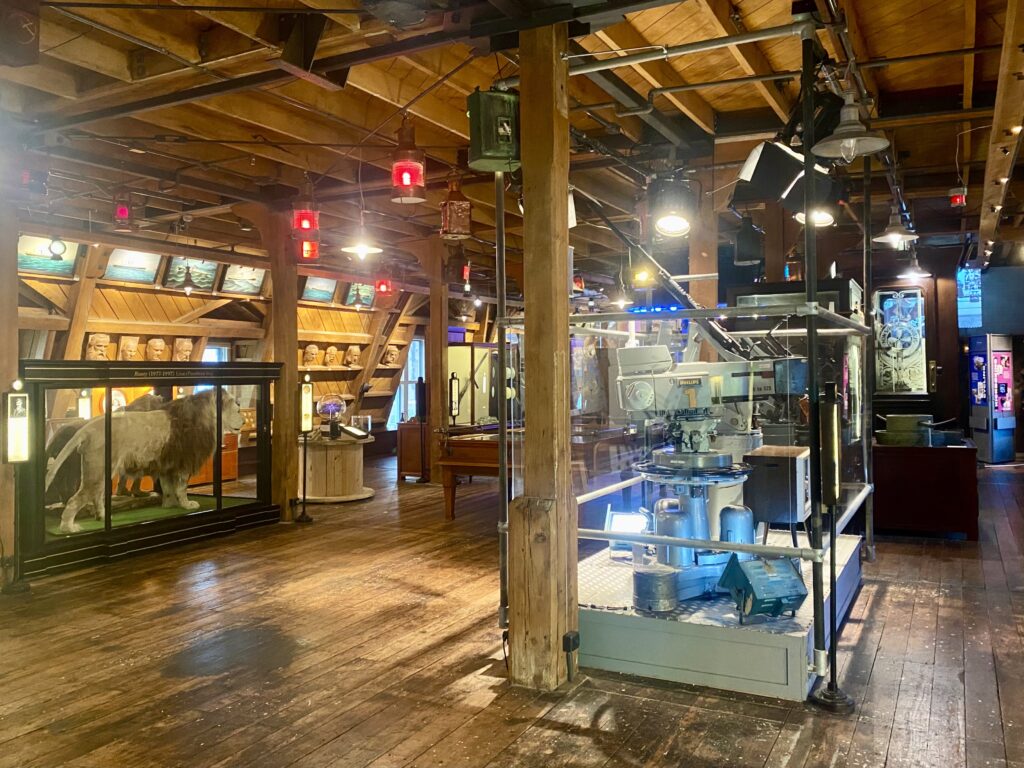
Hiking Trails
I’ve written enough hiking posts in the past that this section shouldn’t come as a surprise! Wellington is also built on several hills, so there’s ample trails to choose from. I’ve already mentioned Mount Victoria, of course, and there’s the walkway along the harbourfront. I like the City to Sea Walkway, which runs not far from where I live. I did it in two halves, once from my place towards the sea and the other time towards the city. It undulates over several of Wellington’s hills, alternating between shady forests and wide open vistas over the city. The sea side ends in Island Bay, where you can relax on the beach for a while!
Also near Island Bay, I walked the Pariwhero Red Rocks trail one afternoon. This is a mostly flat, coastal route along the South coast, past beaches and jagged rock formations. As the name suggests, there is a cluster of red rocks at one point, and right at the end I spotted a few New Zealand fur seals lounging around. I also went on a clear enough day that I could see all the way across the Cook Strait to the South Island!
For a more strenuous uphill hike, I headed to Otari-Wilton’s Bush one day, starting off with an easy stroll through the forest. I then joined one of the narrower trails which got dramatically steeper, climbing up to meet the Skyline Walkway. This is used by cyclists as well as walkers, so stay alert as they whiz past! I only walked a small portion of the Skyline, but it offers wide, sweeping views of the hills surrounding Wellington. I then descended into Otari-Wilton’s Bush again to make a loop, passing by the incredible 800-year-old Moko tree on the way!
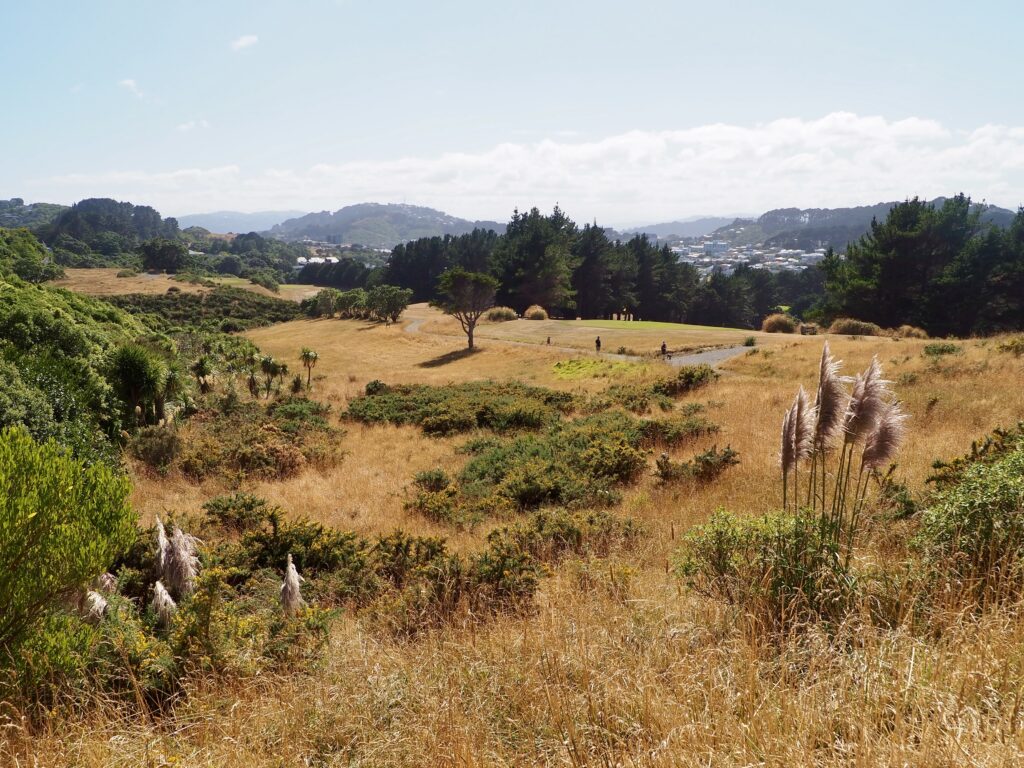
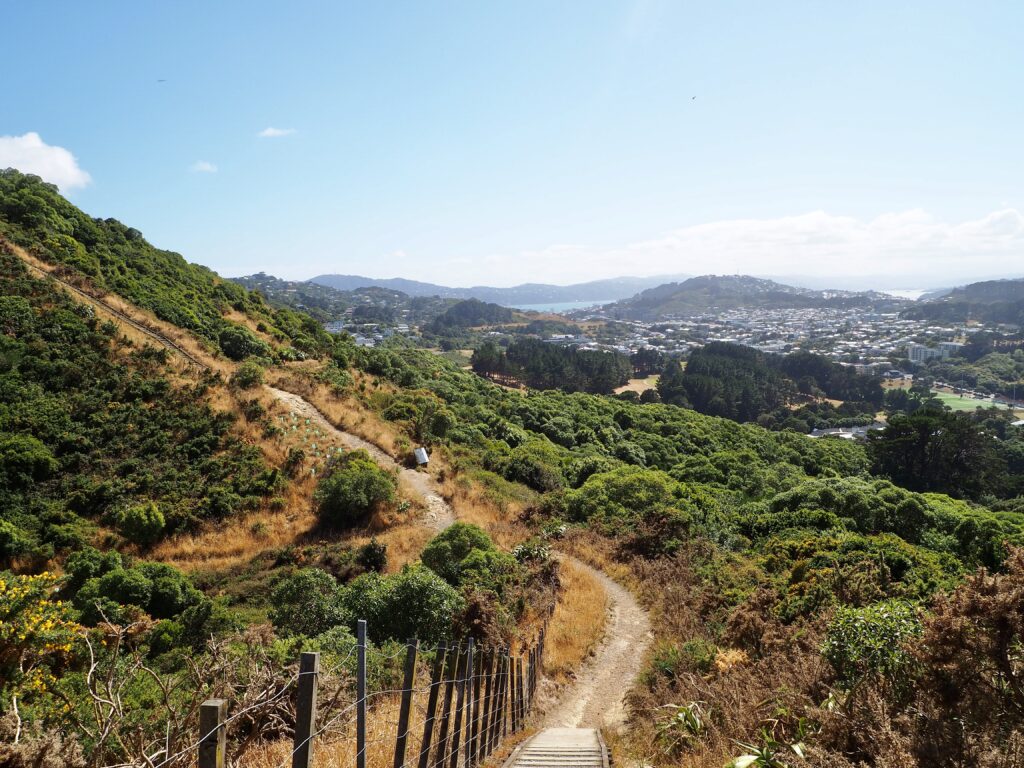


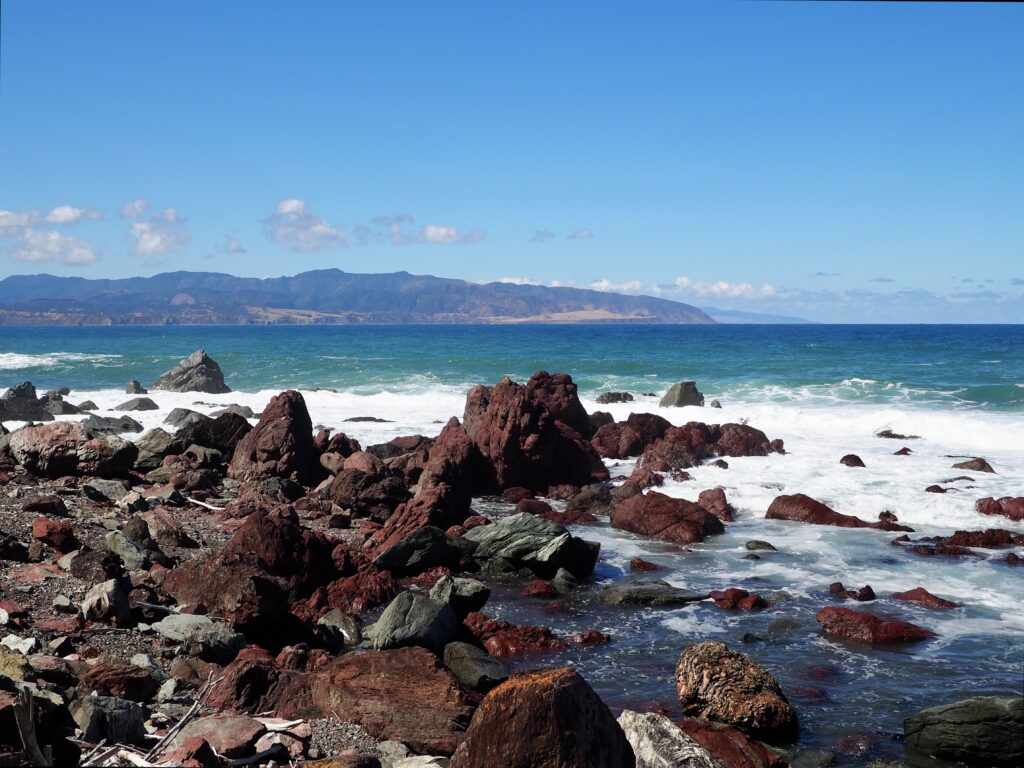
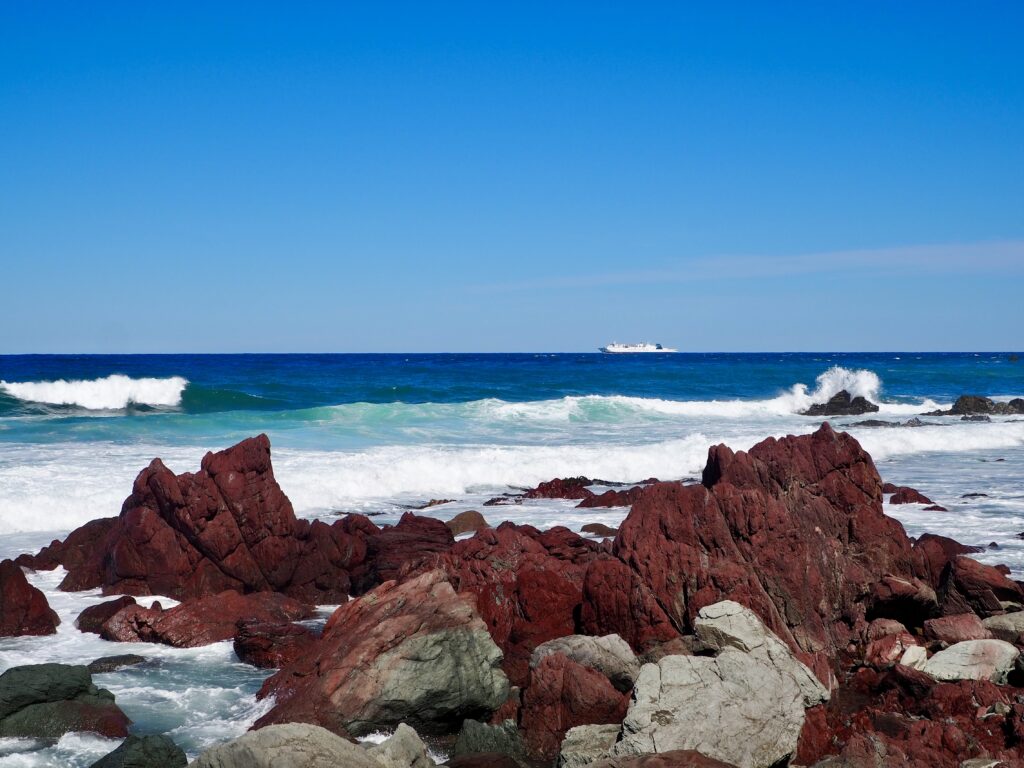


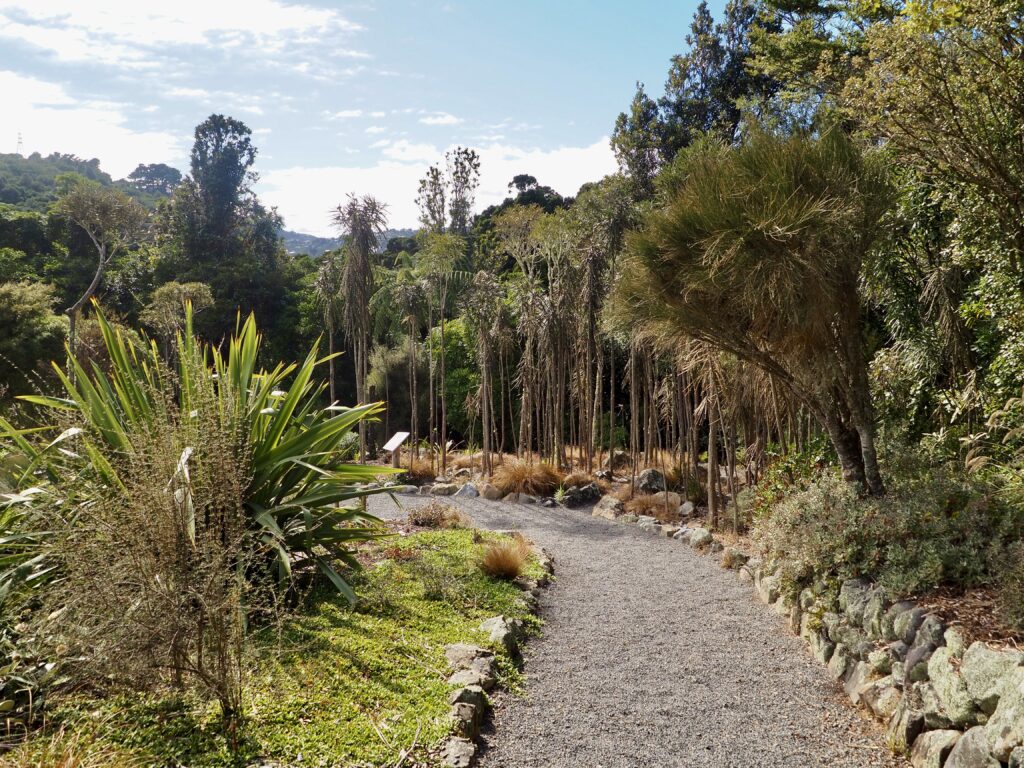
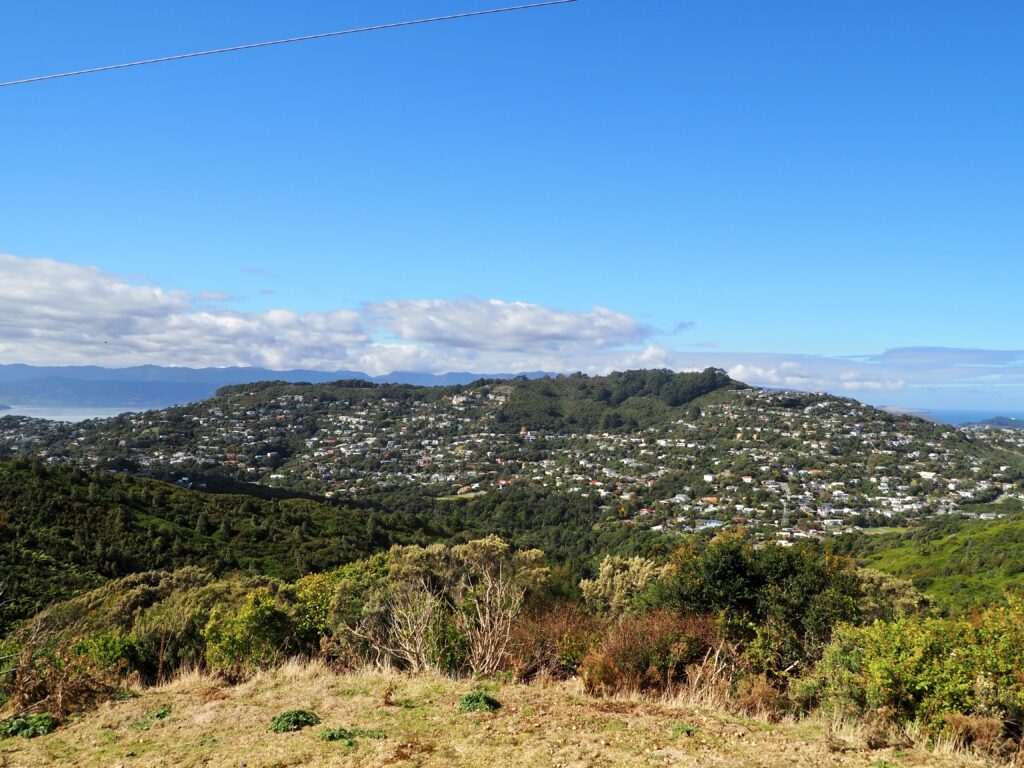

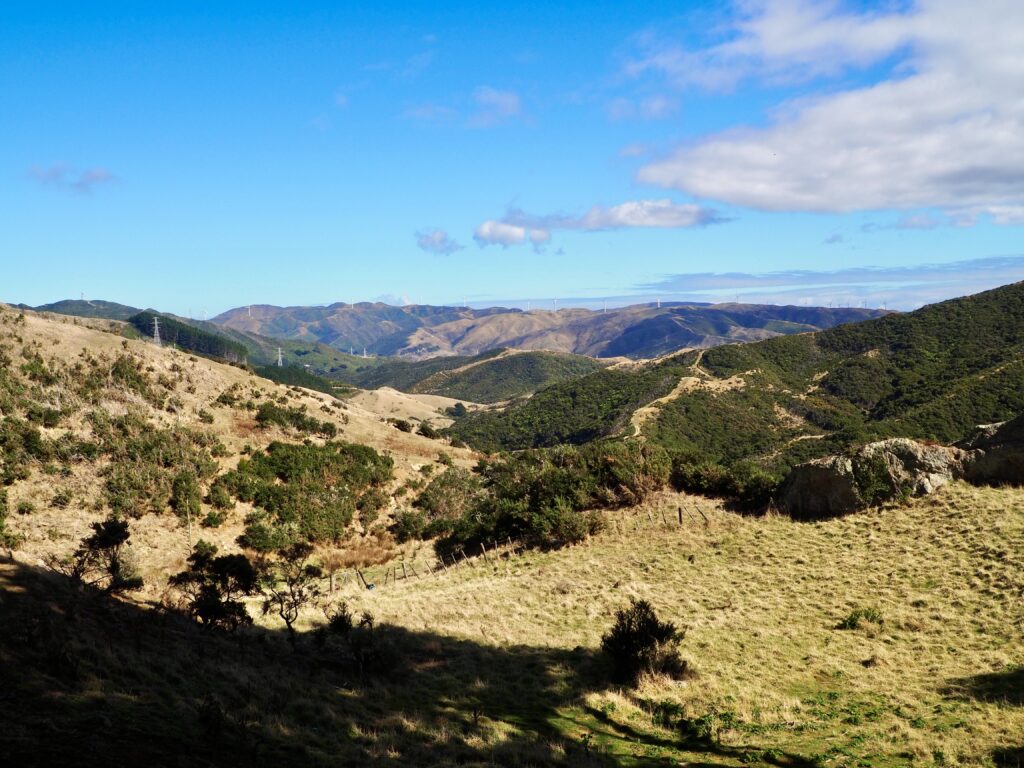
Wellington So Far
So, as you can see, I’ve covered a lot of the highlights of Wellington so far! I’m certainly starting to run out of places on my to-do list now. Naturally, this has all been spread across various weekends in the past few months. But I suppose if you were visiting as a tourist, you could cover a good amount of this in a week or so. I think Zealandia and the Weta Workshop have been some of my favourites so far. Although Te Papa and the Botanics were also great! None of it has been bad or not worth seeing, really. I’m certainly glad that I ended up living in a city with so many options to keep me busy and entertained these past few months. And of course, there’s still all of the rest of New Zealand to explore!

I'm Moving to New Zealand

Long Weekend in Tauranga
You May Also Like

Havana, Part 1 | Cuba
24 April 2020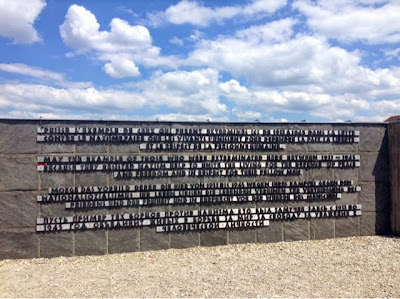
European Escapade Day 17 – Vienna to Munich
16 June 2014